Event recap – Leading With Equity: Tribal Food Sovereignty & Inclusive Engagement
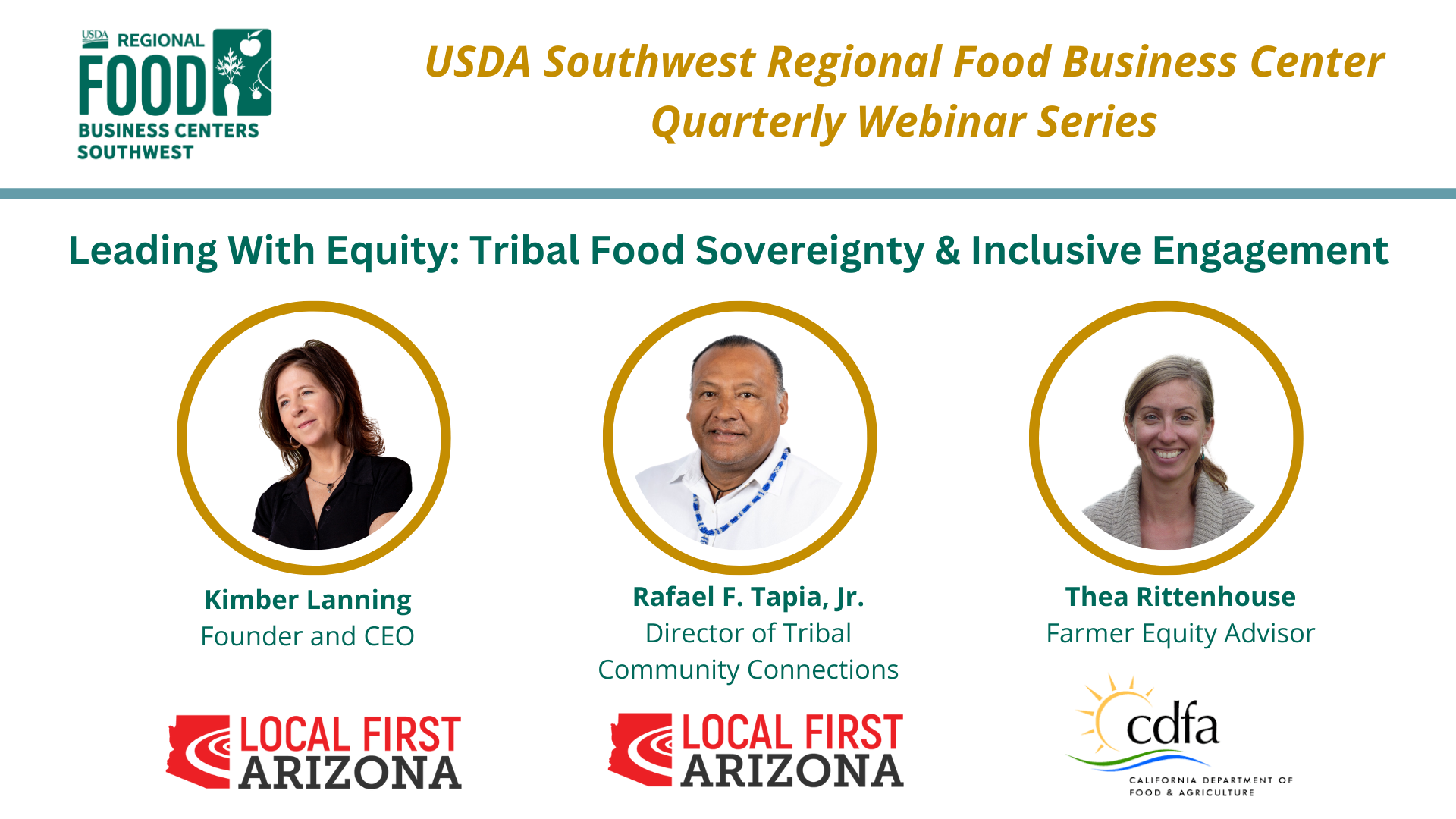
On July 17th, the USDA Southwest Regional Food Business Center hosted an informative webinar titled “Leading With Equity: Tribal Food Sovereignty & Inclusive Engagement.” This event featured Center partners, including the California Department of Food and Agriculture (CDFA) and Local First Arizona. Speakers Kimber Lanning and Rafael F. Tapia, Jr., of Local First Arizona, and Thea Rittenhouse of CDFA, discussed equity-centered initiatives and strategies to bolster food sovereignty for Tribal Nations and other underinvested communities. The webinar is part of the Center’s quarterly webinar series, where Center partners share best practices and innovative projects on essential topics related to business development and capacity assistance for local producers, farmers, and ranchers.
Over 60 participants from across the nation attended the webinar, including representatives from other USDA Regional Food Business Centers. Attendees were actively engaged throughout the webinar and speakers were able to address dozens of questions throughout the session.
One of the key takeaways from the webinar was the emphasis on food security, traditional food practices, sovereignty, and self-determination. Speakers discussed best practices for incorporating Indigenous knowledge and highlighted the unintended consequences of policies and funding that do not consider Tribal interests or approaches. They suggested pathways to build communication, develop partnerships, and establish trust. Additionally, the speakers addressed the critical infrastructure needed for Tribal communities, such as new wells, aggregating and distributing facilities, food-to-market distribution, and technical assistance, including business and market development skills.
The next webinar will take place on October 16th.
About Valley Vision and the Southwest Regional Food Business Center
Valley Vision leads coordination, communication, and network development efforts for the Southwest Regional Food Business Center. The quarterly webinar series is part of Valley Vision’s efforts to share best practices and to foster a collaborative network among Center partners and other participants.
The Southwest Regional Food Business Center, representing Arizona, California, Nevada, and Utah, is one of twelve USDA Regional Food Business Centers nationwide developed in 2023 to provide coordination, technical assistance, and capacity building to help farmers, ranchers, and other food businesses access new markets and initiatives, as well as navigate federal, state and local funding and resources. With an extensive network of partners from academic, government, and community-based organizations, the Southwest RFBC is dedicated to prioritizing historically underrepresented communities and small to mid-tier businesses.
For more information about the USDA Southwest Regional Food Business Center and its initiatives, visit www.swfoodbiz.org. To stay updated on future webinars and events, be sure to subscribe to the Center’s newsletter: http://bit.ly/SWRFBC-Newsletter.
USDA disclosures and guidance can be found at https://bit.ly/USDAdisclosures.
Visit the Center’s socials here.
Transforming Food Systems Across the Southwest Region
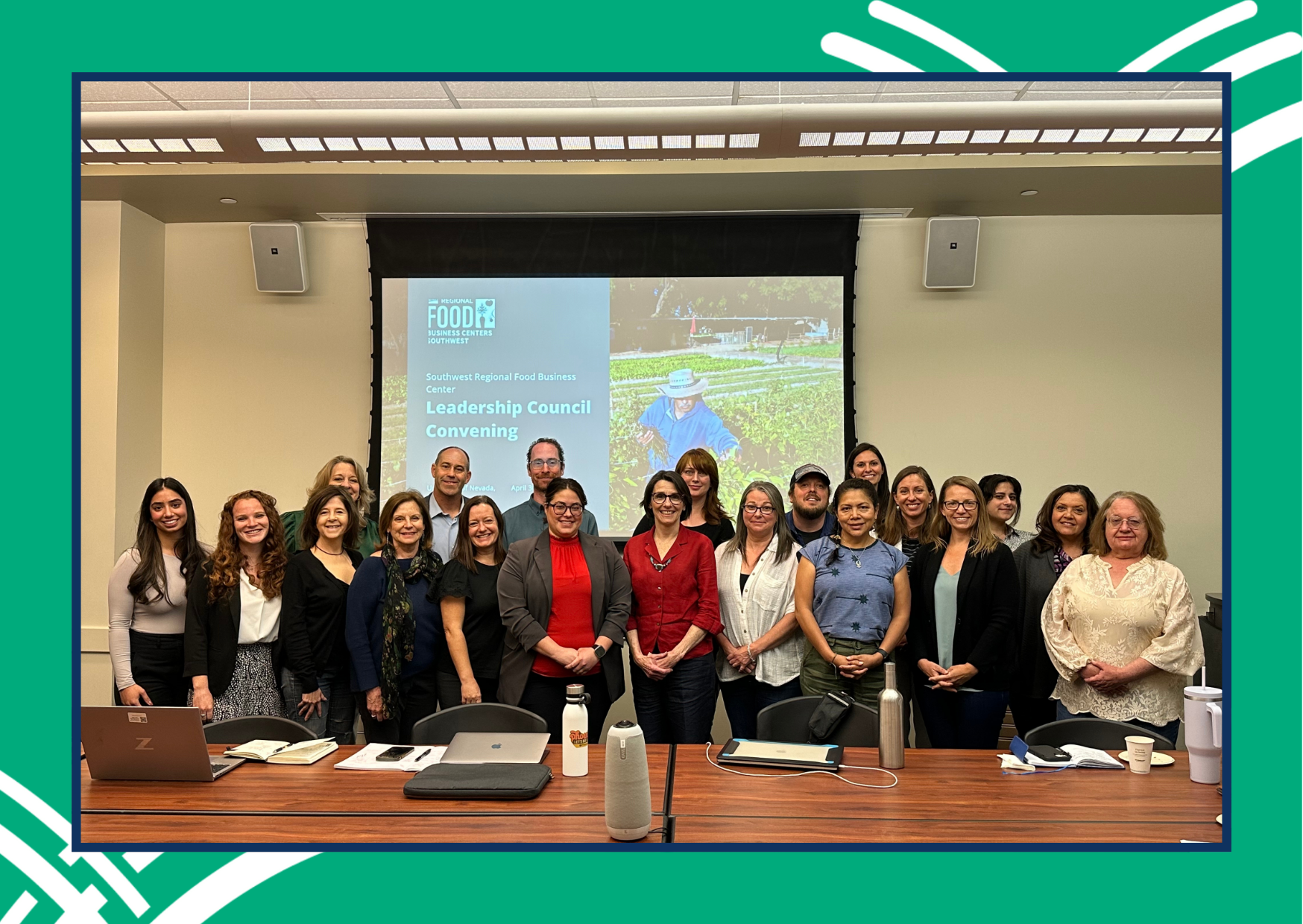
At the beginning of May, leadership of the USDA Southwest Regional Food Business Center convened in Reno, Nevada, providing the opportunity to further advance the Center’s mission, objectives, and programmatic activities, as well as share insights and best practices across emerging opportunities for food system transformation.
During the two-day convening, hosted by the University of Nevada, Reno (UNR), leadership representing the Southwest Region (Arizona, California, Nevada, and Utah) discussed the unique assets, needs, and activities within each state, and solidified the Center’s workplan. Day one featured collaborative working sessions oriented towards internal Center values, capacity, and timeline, as well as a tour hosted by the UNR Desert Farming Initiative (DFI), showcasing climate-smart crops and farming practices, local food-to-market successes, and active research initiatives.
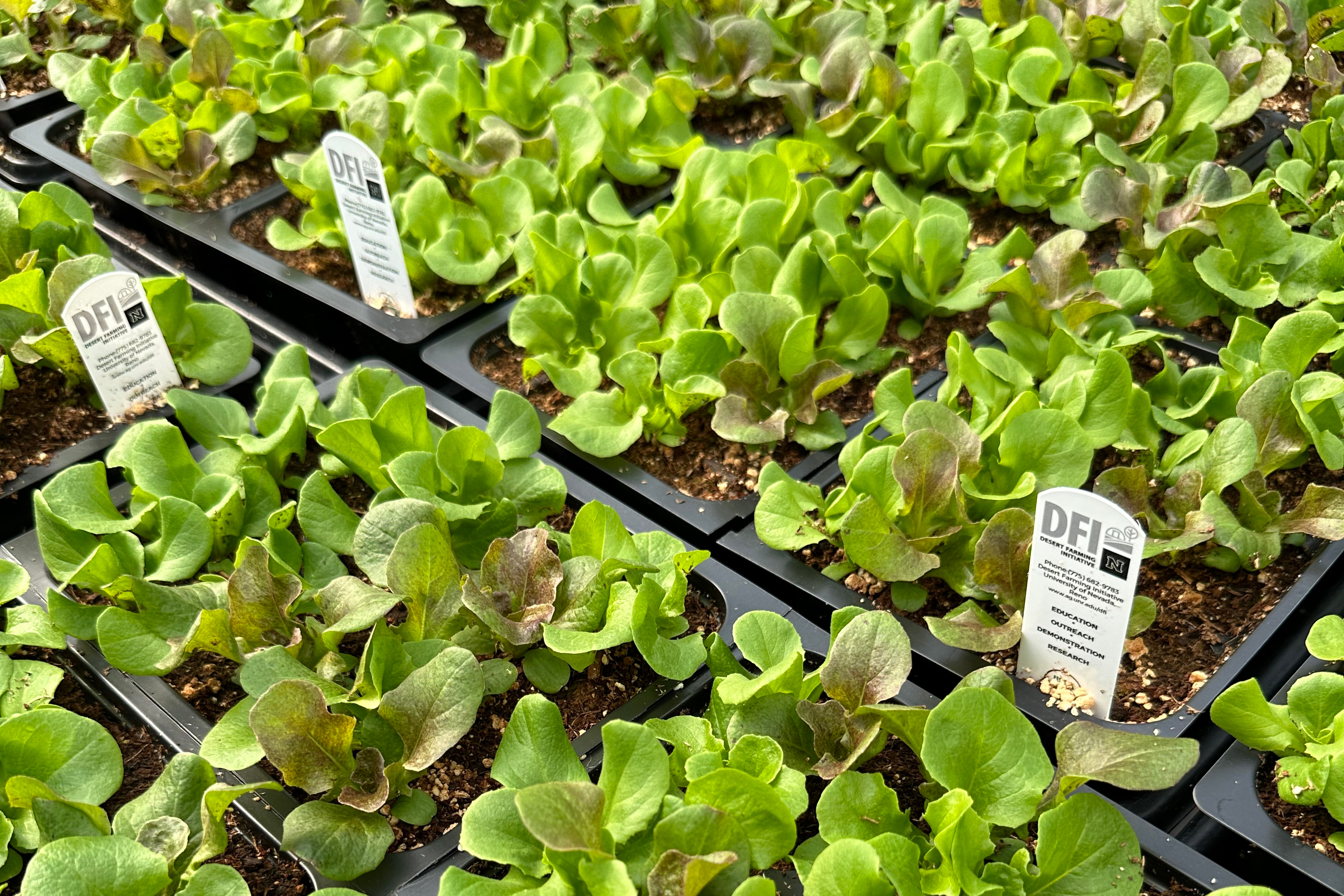
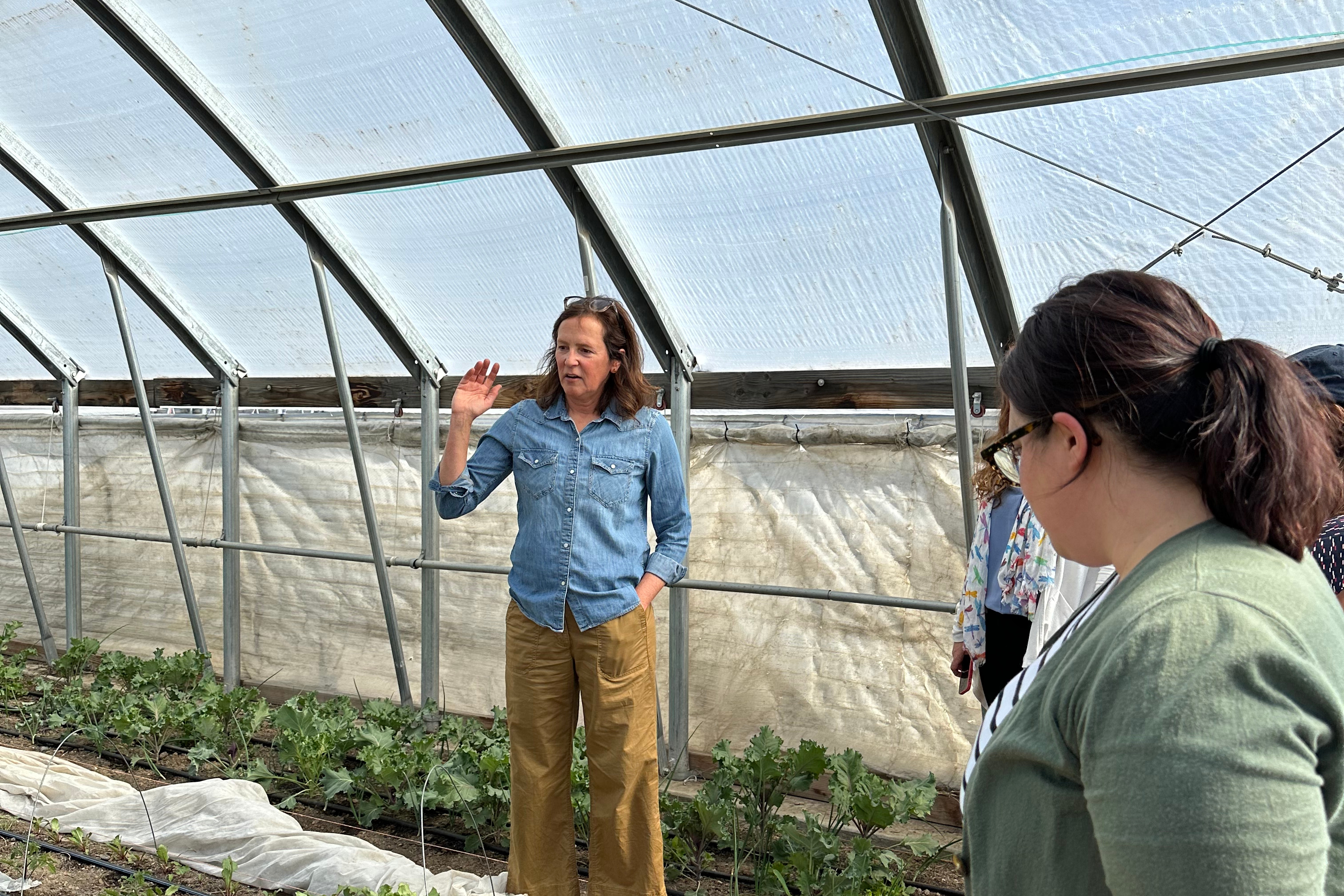
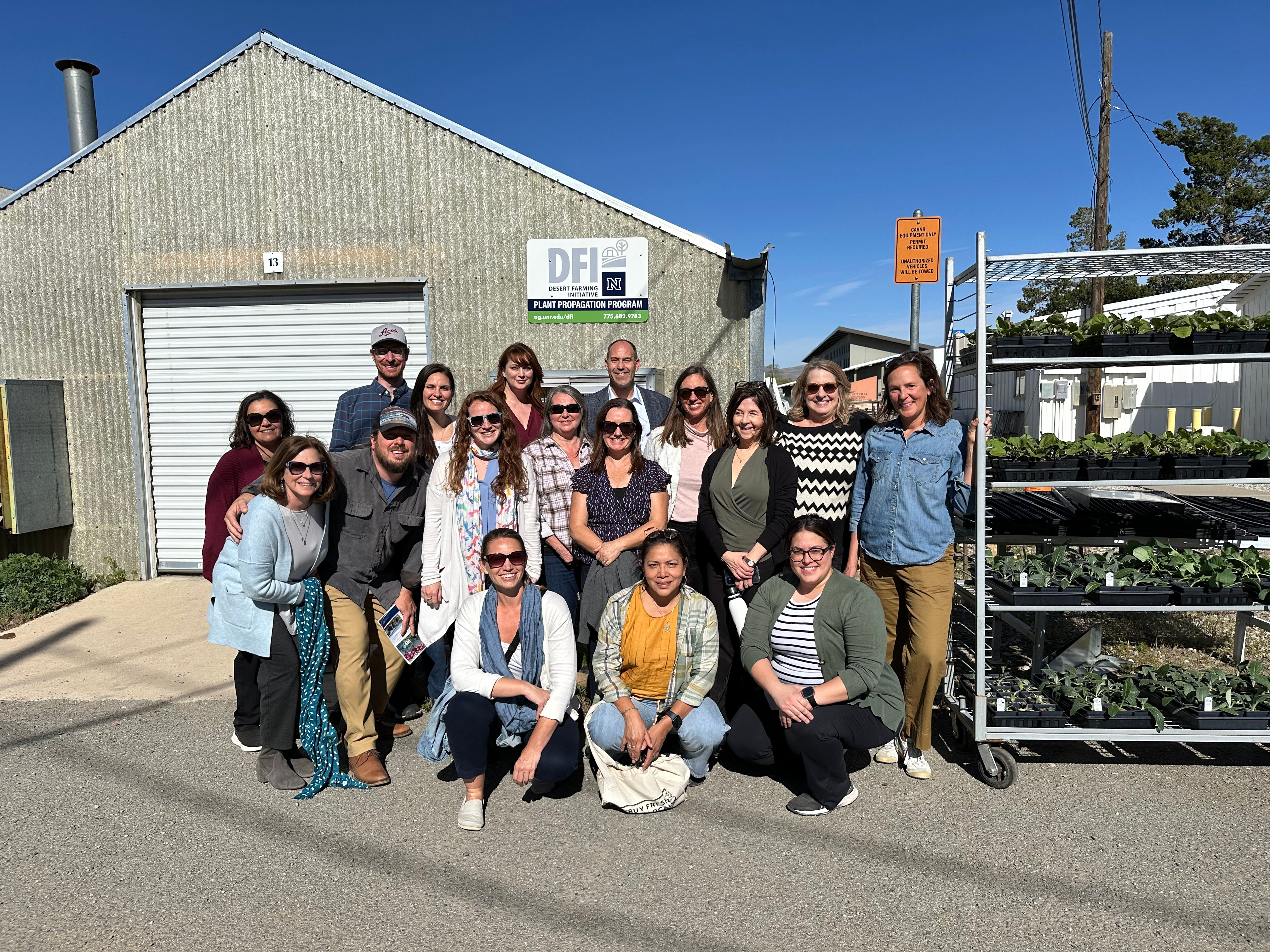
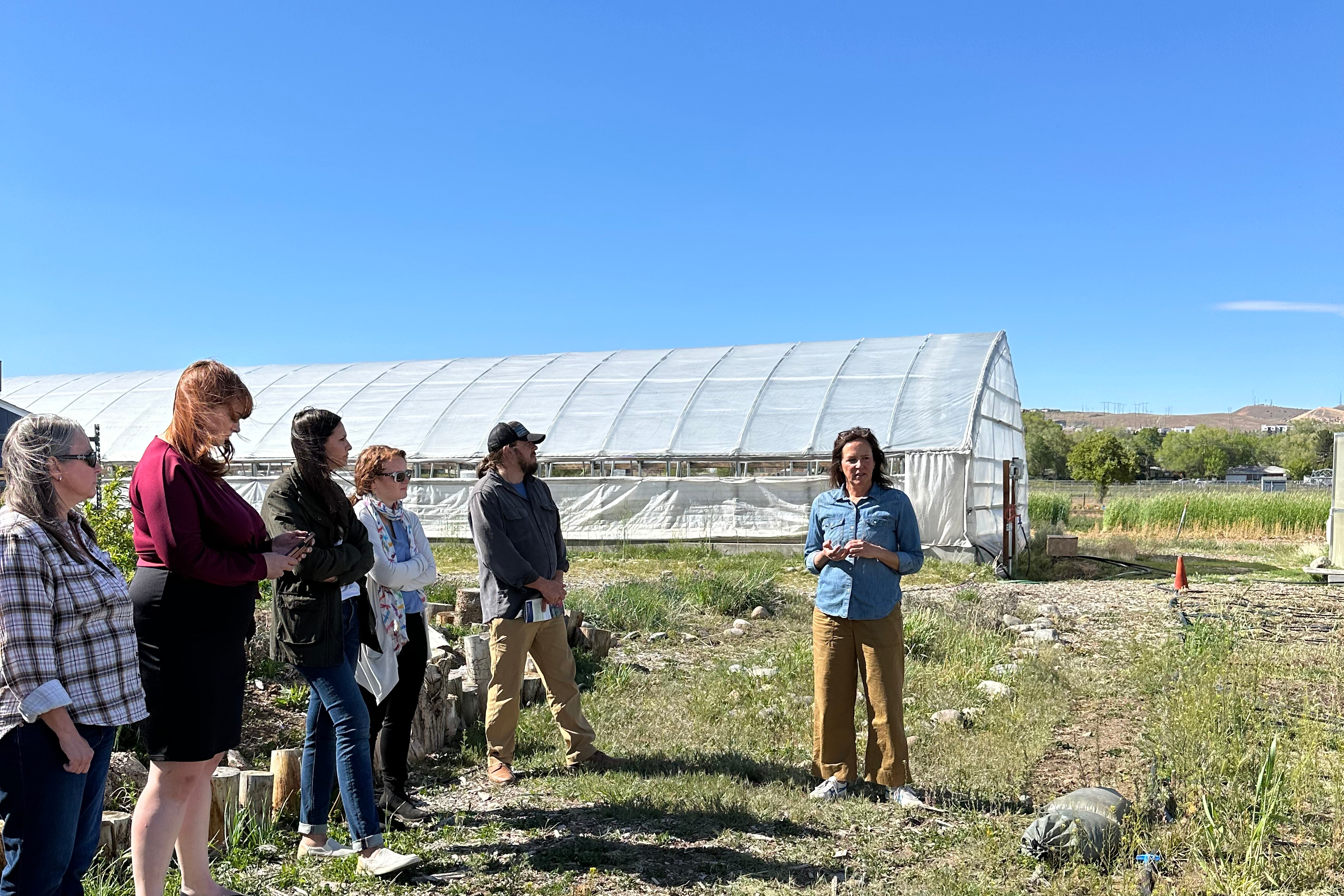
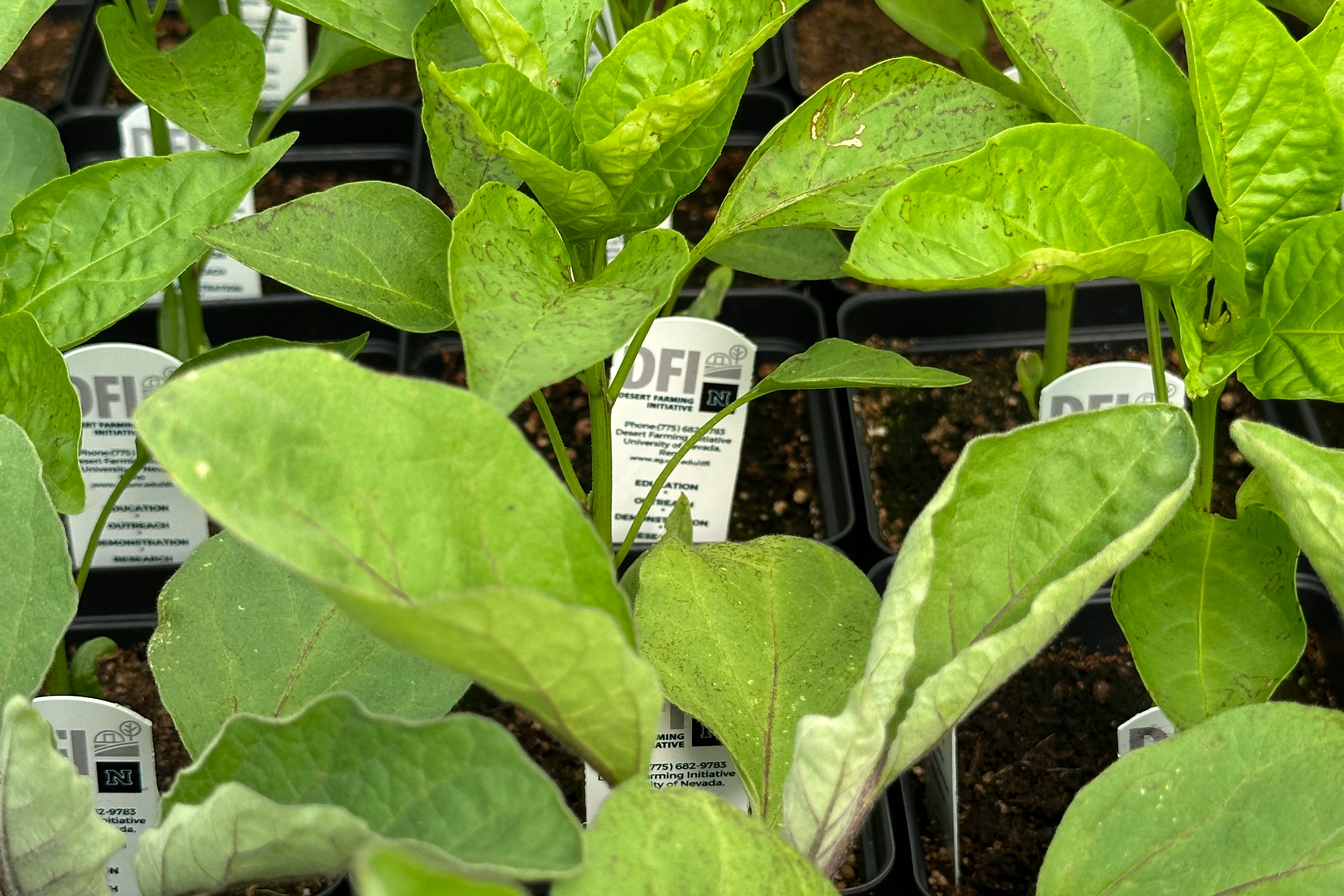
USDA Marketing and Regulatory Programs Senior Advisor, Kate Fitzgerald, joined Day 2 for an interactive brainstorming session regarding opportunities for collaboration between the USDA and the 12 Regional Food Business Centers nationally. Leadership from each state also provided teach-ins across emerging opportunities, such as equity in technical assistance, market access structures such as institutional procurement and food hubs, and microloan funding development.
This gathering provided Center Leadership with solutions, insight, and connections to drive the Center forward in its mission to transform the region’s food system through investment in small and mid-sized food and farm businesses by providing coordination, technical assistance, and capacity-building for the Southwest Region.
About the Center:
The Southwest Regional Food Business Center is a five-year $35 million program funded by the USDA Regional Food Business Centers Program, connecting Food and Agriculture Initiatives across Arizona, California, Nevada, and Utah. As part of the network of USDA Regional Food Business Centers, the Southwest Center is a hub for the region’s small and mid-tier food and farm businesses and local and regional food sector development initiatives.
In collaboration with University of California Agriculture and Natural Resources (UC ANR), Valley Vision supports the Center as part of the Center Management Team, leading communications, partnership development and programmatic operations.
Subscribe to the Center’s Quarterly Newsletter here.
Visit the Center’s socials here.
Advocating to Secure Unprecedented Federal Resources (Cap-to-Cap 2024)
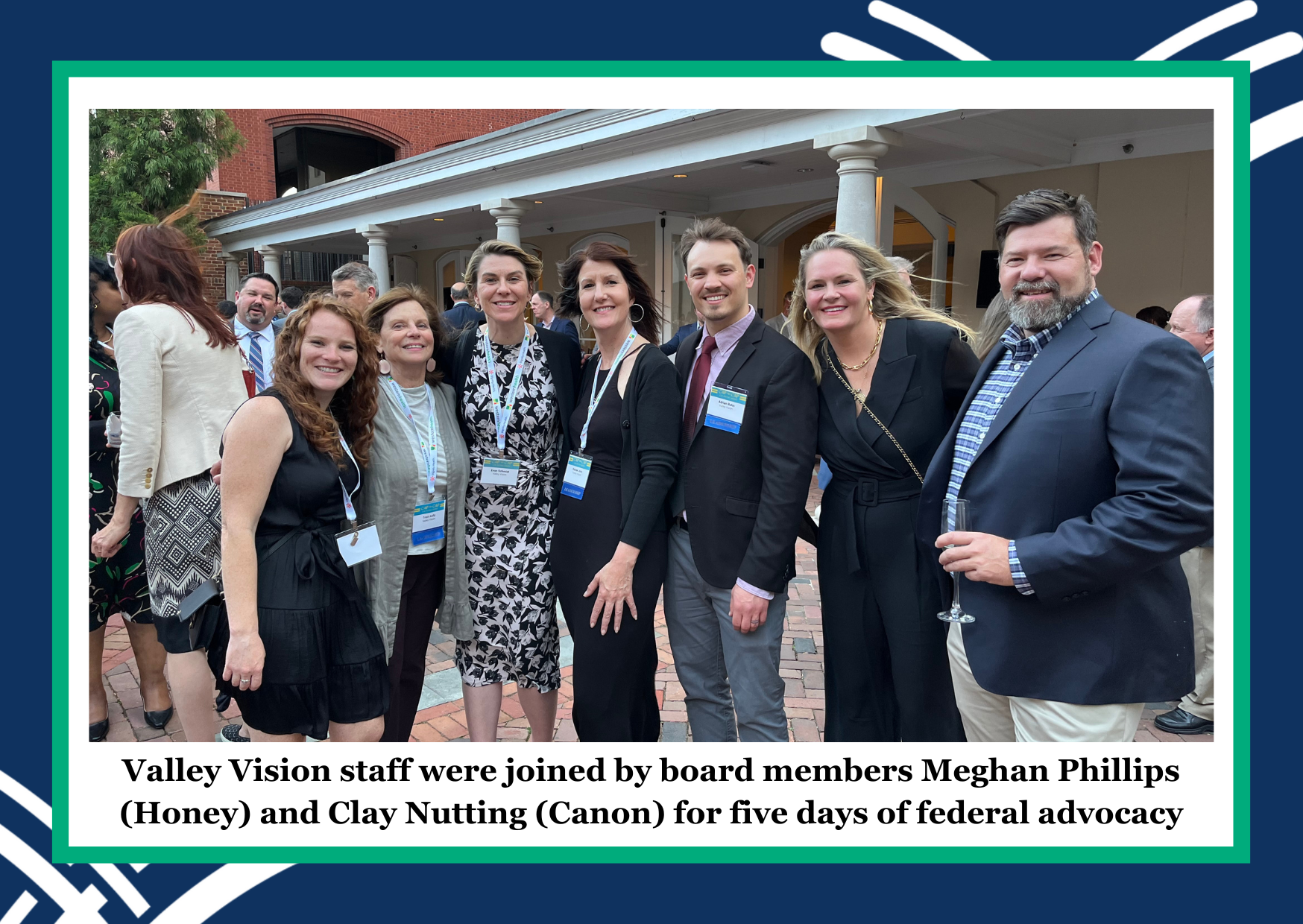
Right now is a critical time to engage with the federal government.
Once-in-a-generation resources are available for the “big play” investments that our region needs to grow and thrive. Valley Vision has a long history of participating in the Sacramento Metro Chamber’s Capitol-to-Capitol program, which serves as our region’s premier federal advocacy opportunity each year. This program provides opportunities to meet with the Sacramento Region’s federal legislators and encourages participants to meet with federal agencies, many of whom oversee competitive funding programs.
This year’s 52nd annual“Cap-to-Cap” was the largest on record, with 425 leaders participating. Valley Vision staff led and supported many of the topic-based teams and, in keeping with tradition, have documented their experiences below.
Clean Air & Climate by Adrian Rehn
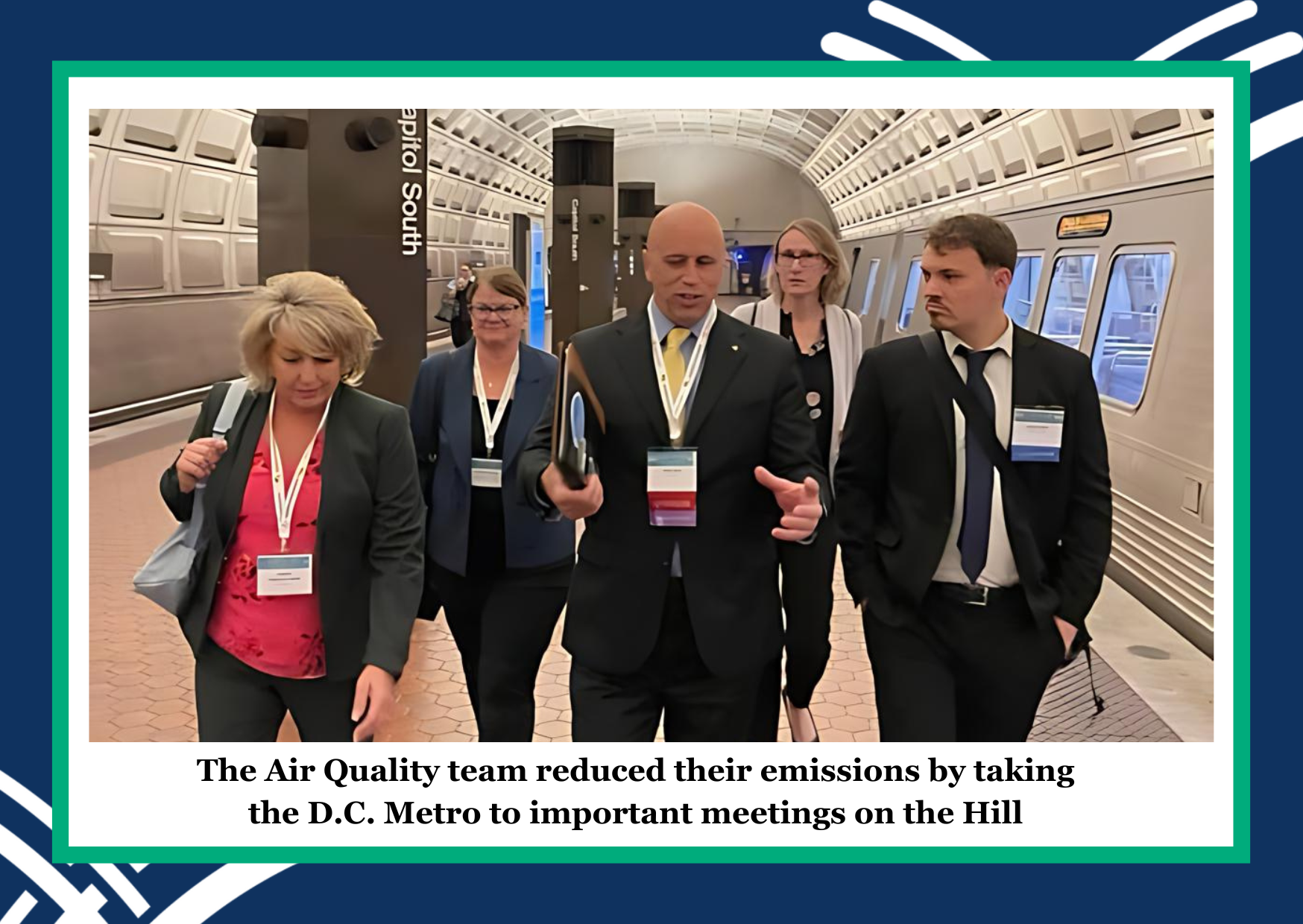
The Cleaner Air Partnership, which Valley Vision staffs, staffs two of the thirteen policy-focused “teams” focused on (1) air quality and (2) wildfire. This year, our teams elevated funding for a comprehensive suite of air quality strategies as part of the Climate Pollution Reduction Grant program, climate projects of regional significance, and technical but extremely important policy fixes like letting air districts “write off” smoke from preventative prescribed fire instead of getting dinged by U.S. EPA. We are in the process of following up on these important “Asks” and look forward to continued engagement throughout the year as we continue to work toward cleaner air for all.
Workforce Development & Education by Renee John
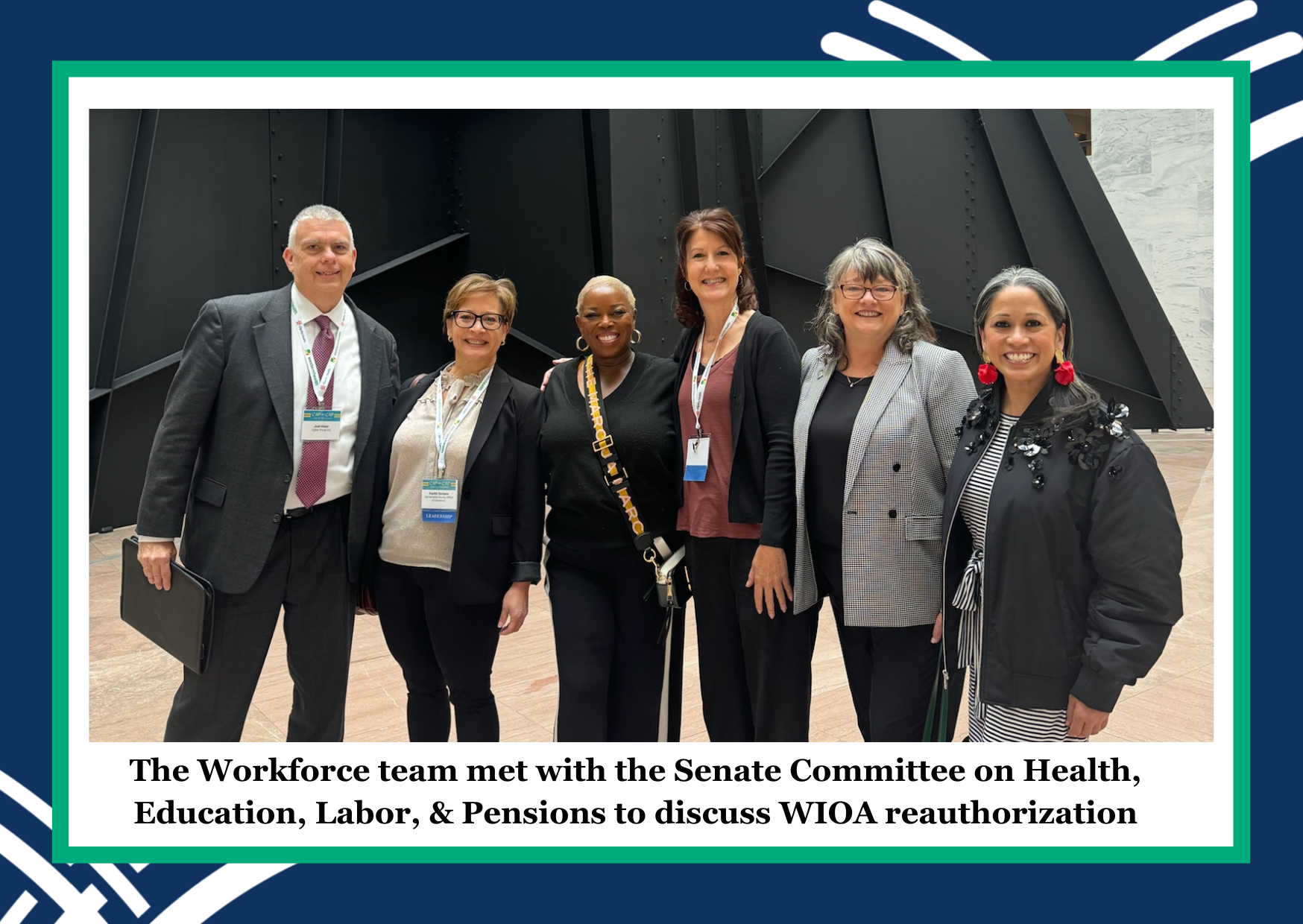
During my third in-person year at Cap to Cap, I co-led the team representing workforce and education. Our team advocated for the reauthorization and modernization of key acts including WIOA, the National Apprenticeship Act (NAA) and the Preparing and Resourcing Our Students and Teachers Act (PROSPECT), as well as expansion of Pell Grant eligibility and Perkins grant funds for vocational and technical education. Our team was co-led by Xanthi Soriano from SCOE and Ejiro Okoro from United Way California Capital Region, and included over 40 individuals from workforce and education institutions including preK-12, higher education, nonprofits, and elected officials.
This year, as in prior years, myself and team members had the opportunity to speak with folks shaping legislation that governs our ability to invest effectively in upskilling our region’s workforce. WIOA has been passed out of the House of Representatives and is currently in the Senate for markup. The Senate HELP Committee is currently creating its own version of the bill. While workforce legislation is generally bipartisan, different opinions on key provisions are common. Our goal was to share stories from the field to illustrate how vital federal funding is to our workforce and education efforts, highlight the key investments California is making, and encourage the federal government to work with haste to streamline and invest effectively in initiatives to ensure our businesses have the talent they need with the ability to pay living wages.
Impacting federal legislation can seem far removed from the daily work we all do. However, my experience has been that folks in Washington D.C. are interested to hear what is working well and what could be improved from partners implementing programs in their cities and regions.
Economic Development by Evan Schmidt
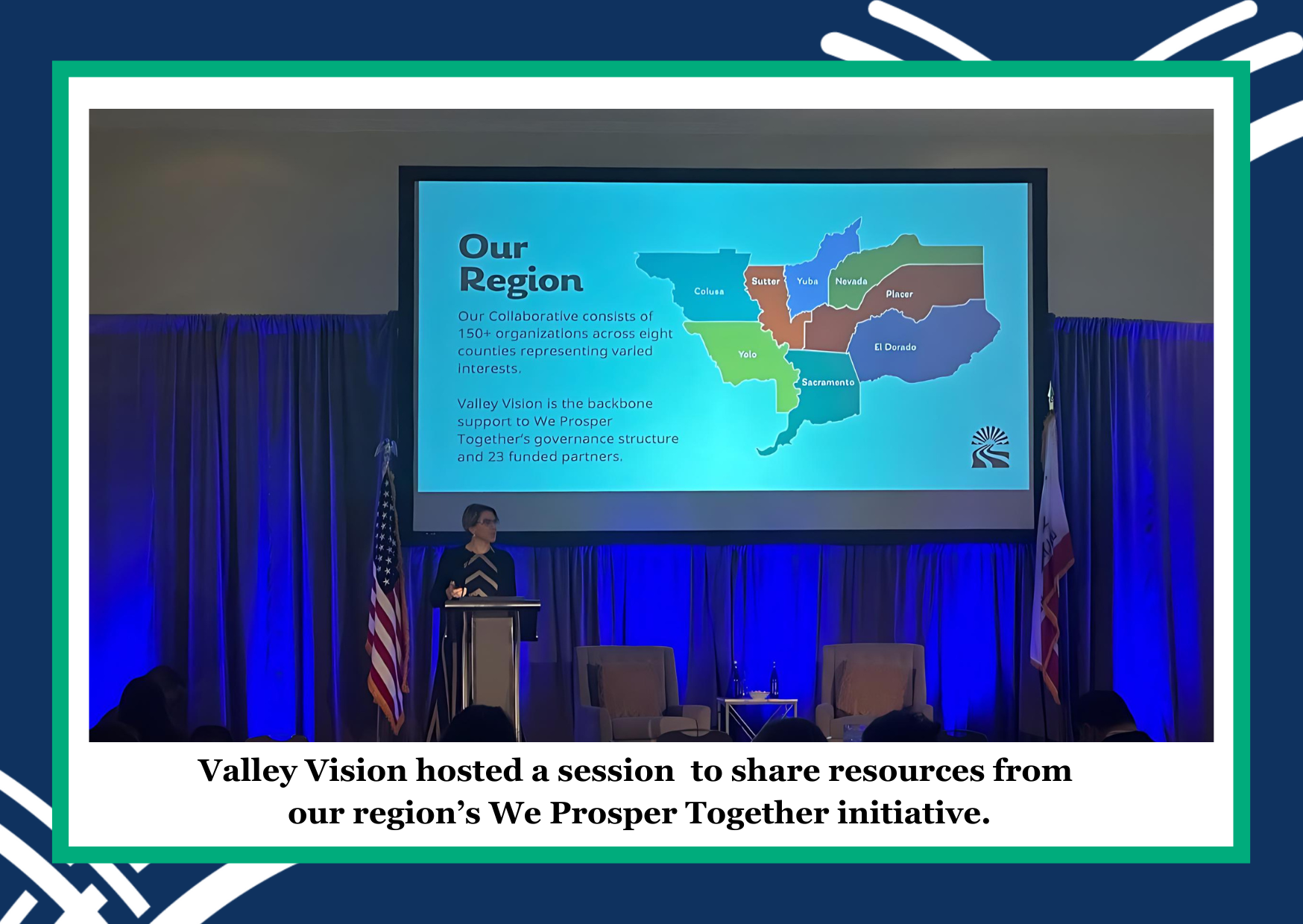
The Economic Development team took the opportunity at Cap-to-Cap to share and advocate for our key regional economic growth priorities and drew connections from the California Jobs First (formerly CERF) regional We Prosper Together initiative. Investing in and advancing the California Mobility Center and clean mobility innovations; advancing job creation and infrastructure around precision manufacturing; supporting our agricultural and life sciences assets including Aggie Square and ag innovation coming out of UC Davis and beyond; and supporting the supply chain and economic activity surrounding our region’s working lands were key priorities carried by the team.
We were able to meet with our regional representatives as well as key federal contacts at the National Science Foundation, Economic Development Administration, Small Business Administration, and US Department of Commerce, CHIPS for America. These meetings create opportunities for our region to identify investment opportunities with key federal contacts, communicate our region’s value proposition and needs, and build cohesion among regional stakeholders.
Valley Vision was also pleased to host a session for all delegates with our partners at the Brookings Institution to share data resources that have been compiled and analyzed for our region in the last nine months as part of the We Prosper Together initiative. Brookings researchers reinforced the importance of our key industry sectors and shared analytics about our region’s economic and innovation landscape. Explore the data and read the Executive Summary here.
Food and Agriculture by Grace Kaufman
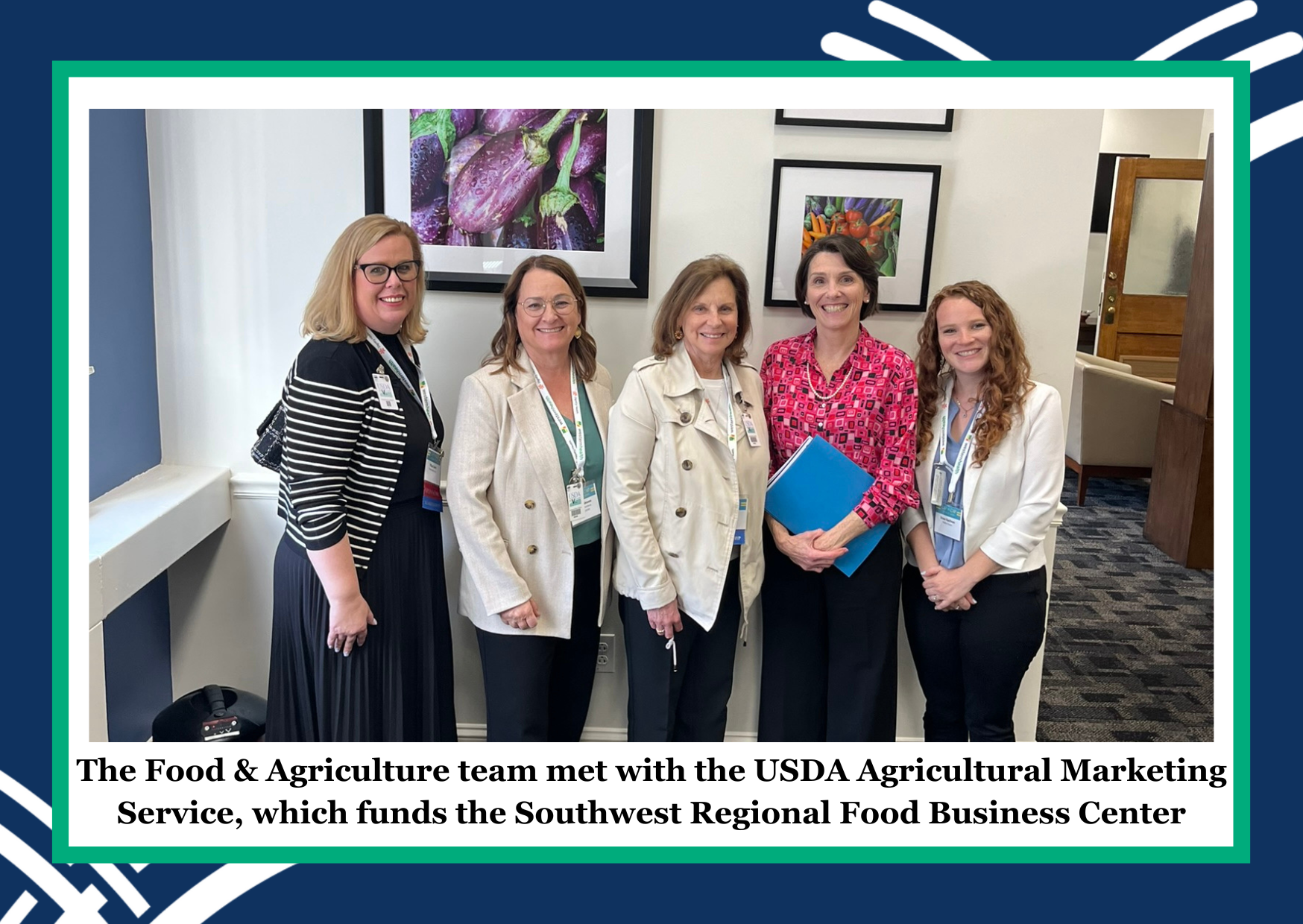
How can we leverage funding across multiple departments in USDA to provide more resources for infrastructure that supports small and mid-size food businesses? How can we improve food and nutrition insecurity while also supporting the region’s local farms and restaurants? Those were some of the questions the food and agriculture team asked our representatives and federal agencies during the 2024 Cap-to-Cap program.
The food and agriculture team met with staff from three separate USDA departments. These meetings helped the team better understand and connect USDA opportunities to support the Sacramento Region’s food and farm businesses. This was particularly helpful for Valley Vision, as we support coordination and communication for the new USDA Southwest Regional Food Business Center, one of a network of 12 Centers across the country that provides resources and technical assistance to underinvested farmers and food producers.
This year was my second year attending the program, and I look forward to attending next year to advocate for the Sacramento Region and the Southwest Regional Food Business Center. In the meantime, Valley Vision will continue to work with partners to build a food and agriculture system that is resilient, innovative, sustainable, and equitable.
Food and Agriculture and Economic Development by Trish Kelly
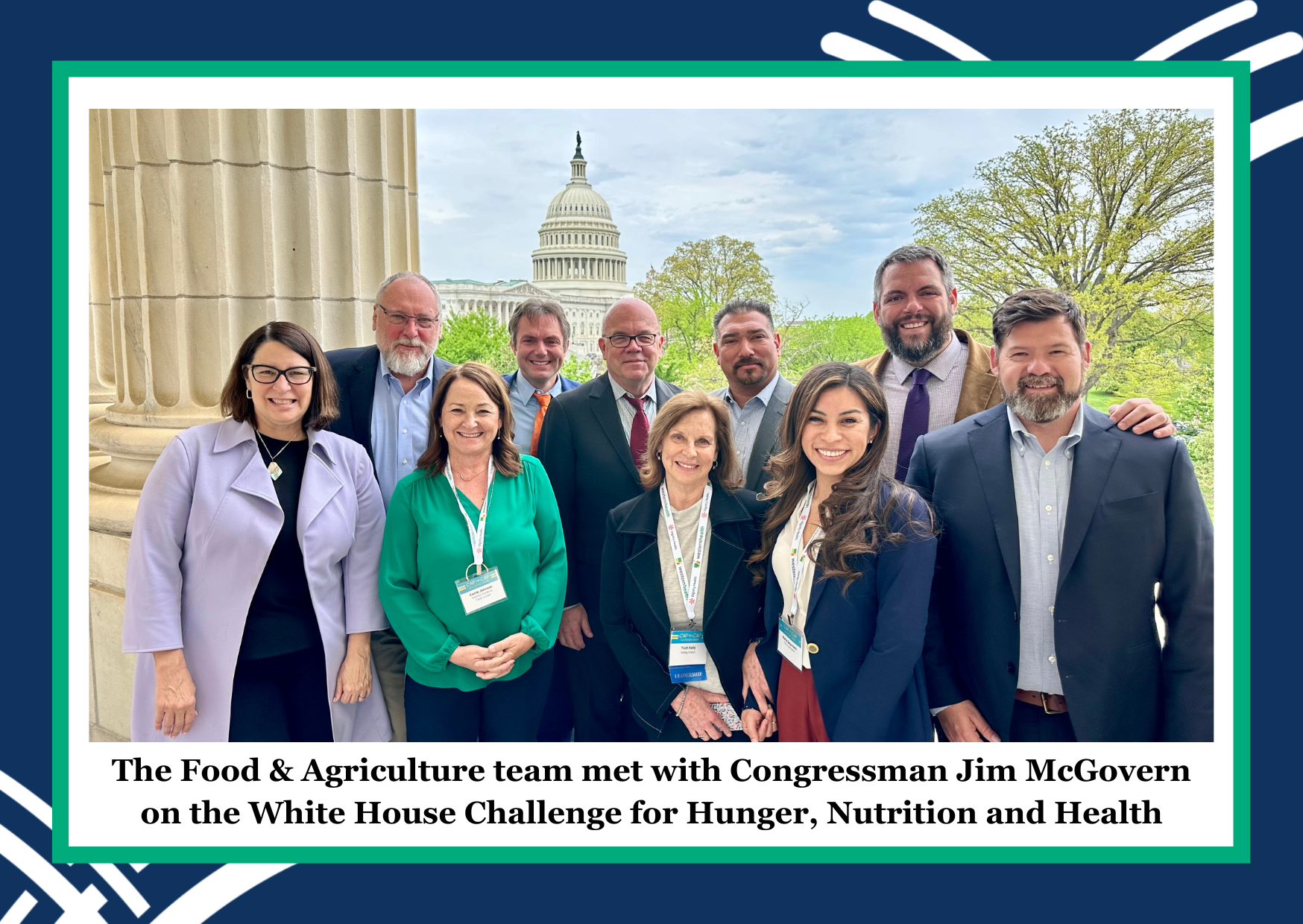
I co-lead the Food and Agriculture team and support the Economic Development team. Our priorities centered on the passage of the 2023 Farm Bill as well as overall food system resiliency. These two areas encompass such important issues as hunger and nutrition security, food is medicine, agricultural viability, institutional procurement (farm to school and farm to hospital), broadband connectivity, and food economy projects. The region is well positioned as an innovation leader in all these areas and we focus on telling our story and raising awareness of the region nationally, as well as on specific asks, such as removing barriers to healthy food access and fully funding the Farm Bill (which is passed every 5 years, but has been rolled over to 2024).
Our team includes a great cross-section of our food and agriculture ecosystem – nonprofits including food banks, farmers, local governments including elected officials (mayors, council members and supervisors), chefs both from restaurants and UC Davis Health, UC Davis main campus, University of California Agriculture and Natural Resources (UC ANR), and businesses.
This is my tenth year participating in Cap-to-Cap and I have seen its strength and impact grow over this time. We’re really built this team from a small and mighty core to a diverse and energized group of leaders, backed up by supporters at home. I look forward to this trip every year as the opportunity to meet with staff and leaders in Congress, including not only our delegation but the staff at key food and ag committees, at the federal agencies, and with organizations such as the American Farm Bureau Federation, national food policy and advocacy organizations and the Brookings Institution.
Two key highlights for me were meetings with Kelliann Blazek, the White House Agriculture and Rural Policy Advisor, and Congressman Jim McGovern, on the White House Challenge for Hunger, Nutrition and Health, and food is medicine legislation. They are inspiring leaders working to end hunger and improve health. But overall, our meetings with our local congressional leaders, USDA, EDA and SBA (the latter two through economic development) were so valuable in learning about new resources, better understanding the opportunities and challenges of the current legislative term, and gaining support for the region.
We’re proud to be part of the largest delegation that comes to DC on a community-focused mission. Since our trip, we have already had a follow-up on a few key priorities, and we feel our team has returned strengthened and committed to carrying the good work forward for the region. We appreciate the opportunity through Cap-to-Cap to engage with local leaders and champions in DC, which carries over into our work at home. We encourage anyone who wants to engage in these issues to stay in touch!
Navigating the Waves: Insights from the Water Careers Event
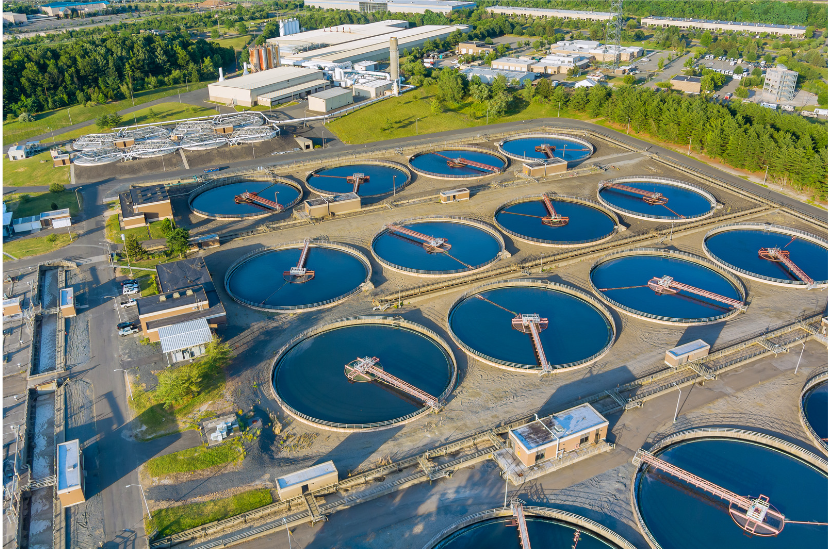
The Energy, Construction, and Utilities (ECU) Advisory event offered a view of water-related career opportunities within the region, delivering valuable perspectives for program development in the field. The event highlighted the opportunities and the challenges of an imminent skill shortage.
Ramzi Mahmood, Director of the Office of Water Programs (OWP) at Sacramento State, and Patrice McElroy, Deputy Administrative Officer from Valley Water, were keynote speakers and shared impactful presentations on the landscape of workforce development in the region, the Labor Market Data presented by the Center of Excellence showed signs of growth, with estimates of an increase from 7,150 positions in 2022 to an anticipated 8,003 by 2027, marking a notable 12% expansion in the region.
However, amidst this positive outlook of job growth, tackling the worker shortage was a predominant theme. Mahmood spoke on the forthcoming wave of retirements over the next 5-10 years, compounded by a nationwide hiring squeeze, presenting challenges in filling critical positions. The keynote stressed the inadequacy of relying solely on chance to attract students to water-related careers. Instead, Mahmood advocated for a comprehensive strategy encompassing early education, specialized training programs, hands-on experiences, recognized certifications, and pathways to successful career attainment. The employer panel echoed similar sentiments. Specifically, Samantha Blackwood from the Department of Water Resources (DWR) explained that one in ten DWR employees are currently eligible for retirement, and in five years the numbers will jump to 20 percent, or one in five, and in 10 years roughly one of three DWR employees are eligible for retirement.
In response to this anticipated shortage, panelists advocated for strategic investments in internships and grant programs. Additionally, training institutions and employer agencies can collaborate to provide practical experience and financial support to prospective employment candidates, laying the groundwork for a skilled future workforce.
As the dynamics of the regional water job market evolve, a focus on planning, education, and investment becomes imperative. Insights gathered from events like this advisory serve as an opportunity to share strategies and networks to navigate this shifting industry landscape. Additional information including the full event recording and presentation materials can be found here.
Agricultural Biomass: Putting the Pieces Together
California’s progress on biomass utilization is like putting together a puzzle – we have the edges in place, but we are still figuring out how everything connects in the middle. Biomass is an enormous opportunity to address our energy and agricultural/forest management needs, but there are significant barriers to scalable use of the abundant resource – or waste stream, depending on how you view it.
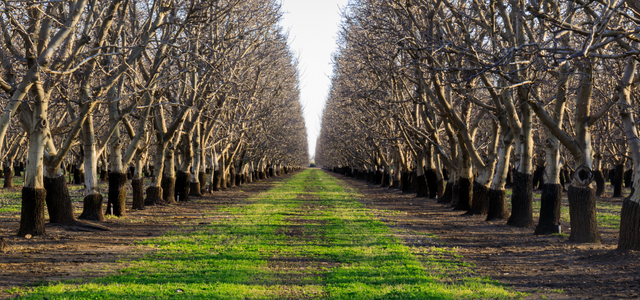
Source: Fruit tree orchard in Winters, CA (Yolo County)
On October 5th, 2023, Valley Vision staff had the opportunity to visit the City of Winters in Yolo County for a two-day conference on the opportunities and challenges of agricultural biomass. The conference was hosted by the Sacramento Valley Basinwide Air Pollution Control Council, who brought together a group of local and state stakeholders including agricultural businesses, regulators, policymakers and researchers. At the conference, stakeholders zeroed in on the current landscape of agricultural biomass, and fueled discussions around opportunities for agricultural biomass utilization.
We were able to hear from business and research experts in the biomass space, discuss benefits of alternative uses of agricultural biomass, and learn from agricultural producers about their experiences with agricultural biomass applications.
The Current Landscape of Agricultural Biomass
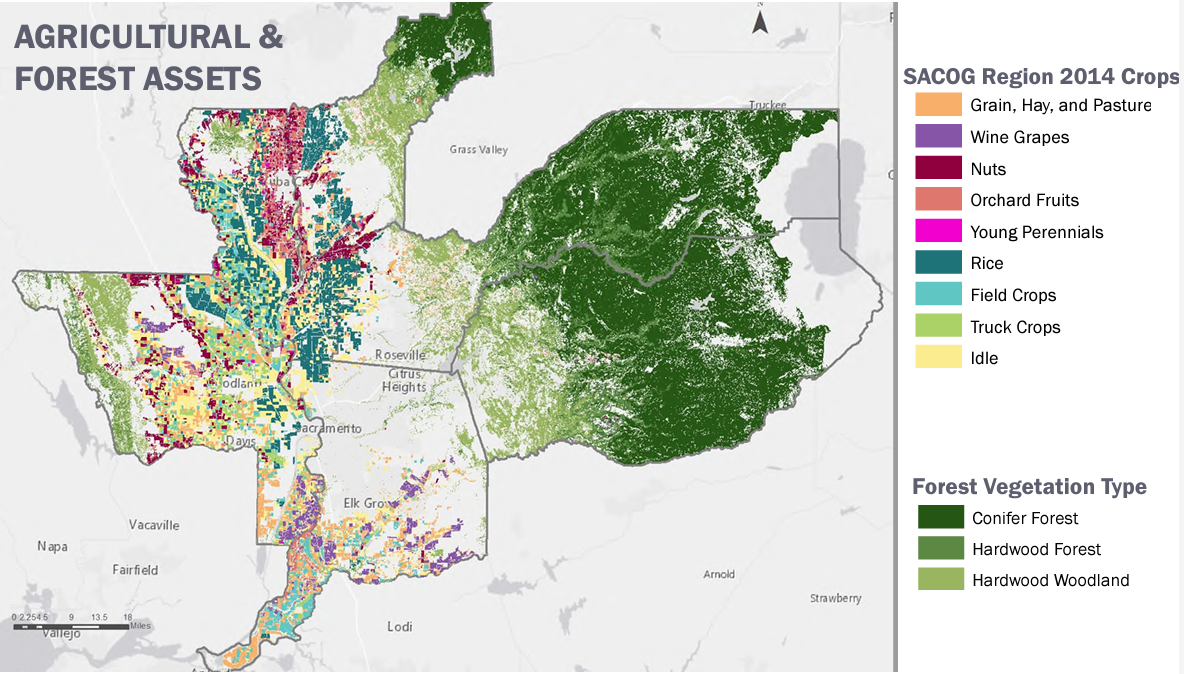
Source: Sacramento Area Council of Governments (SACOG) Rural-Urban Connections Strategy (2014)
There are three primary sources of biomass – biomass derived from municipal waste, biomass derived from agriculture, and biomass derived from forests. Agricultural biomass is agricultural waste, comprising food scraps, orchard trimmings, nut shells, and livestock waste. In the Central Valley, the agricultural industry is a leading economic driver, resulting in abundant and renewable agricultural biomass from farming operations as a continuously-generated resource. According to the California Department of Food and Agriculture in 2022, agriculture accounted for $55 Billion in economic activity, equating to tons of agricultural waste that either ends up in landfills or is discarded in open burning.
Why Ag Biomass?
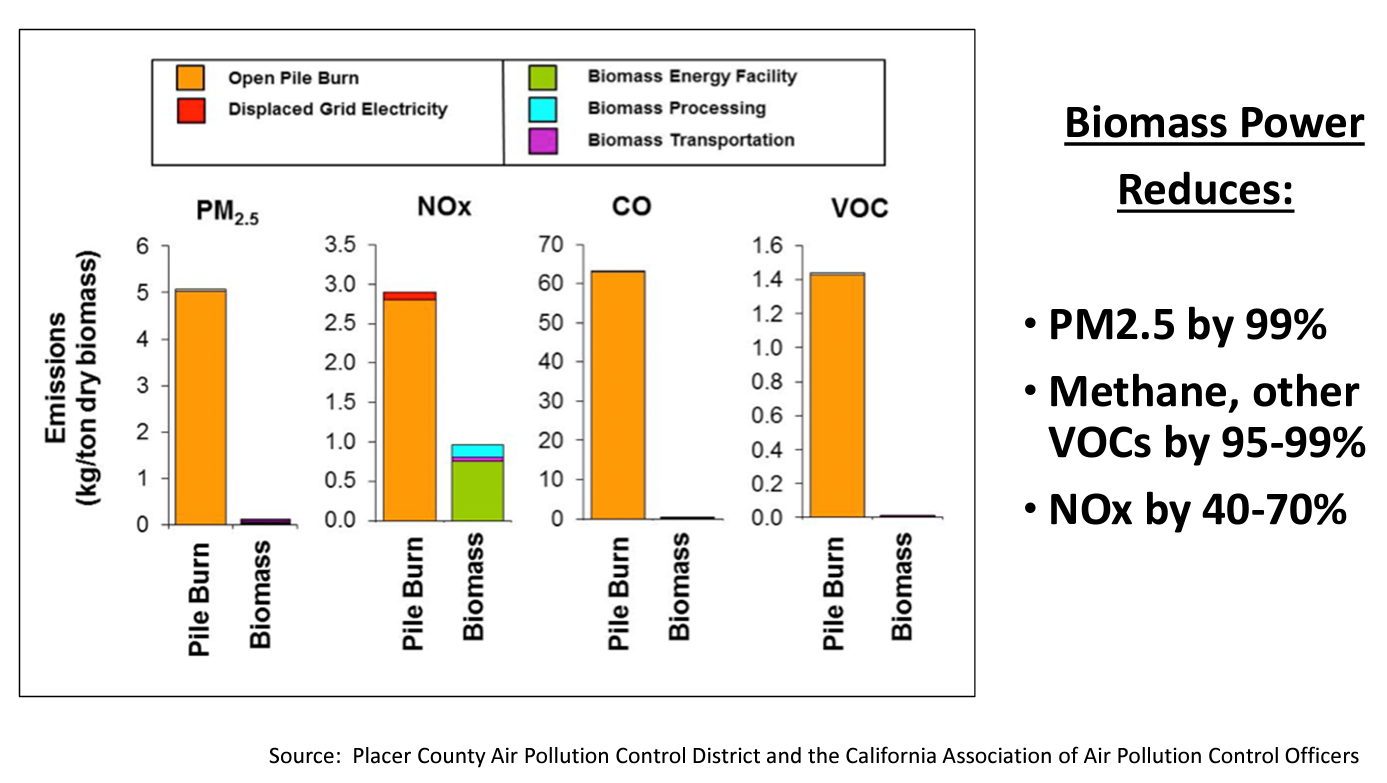
Adding to the abundance of agricultural biomass present in our local and regional economy, there is an increasing need to sustainably, economically and equitably manage this resource. At the conference in Winters, diverting agricultural biomass for alternative uses and associated benefits was discussed. Below are some key takeaways from the conference:
- Climate change impacts – the largest source of methane gas is from the agricultural sector, followed by landfills and the energy sector
- Open burning of agricultural biomass contributes to poor air quality through increased emissions and prevents our region from meeting state and federal air quality standards
- There is an increasing need for clean, renewable energy and fuel sources
- Open burn piles endangers residents and wildlife
- Benefits to agriculture include improved soil, plant health and water efficiency from compost and mulching applications
Envisioning a Future for Ag Biomass:
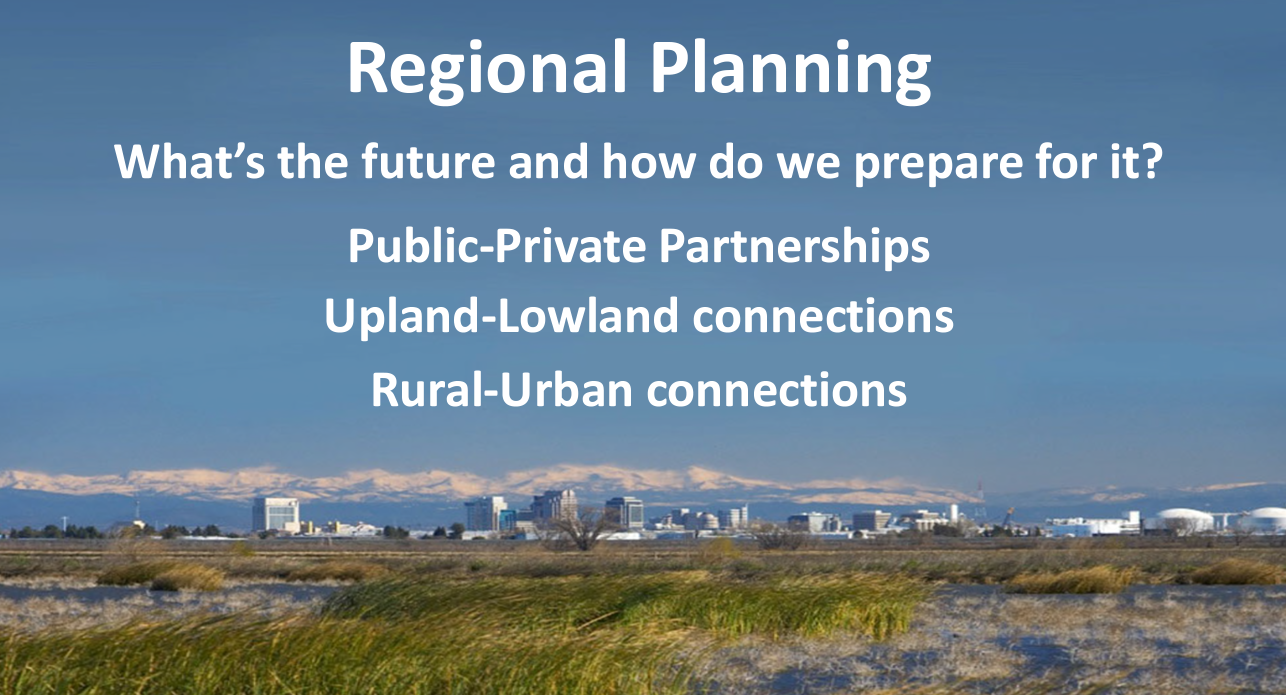
Source: Agricultural Biomass Conference in Winters, CA (Oct. 2023).
Notably, we are in the middle of a clean energy transition and biomass utilization plays a key role in this transition. Agricultural biomass utilization is a multi-benefit approach to managing agricultural waste and mitigating climate change impacts. It is a viable strategy that strengthens rural-urban connections and public-private partnerships, which is what we need in order to solve our region’s most pressing issues. Agricultural biomass should be branded as a value-added resource and not just waste that ends up in landfills or burned in open piles.
Currently, there is a high demand for renewable fuel sources as our state moves towards carbon neutrality and more modernized biomass facilities are much needed in our region. Modernized facilities are an opportunity for the agricultural industry, including local and regional governments and private sector interests to manage agricultural waste efficiently and sustainably, as well as provide valuable and marketable resources that support other sectors, too. The time to act is now as massive federal funding from the Inflation Reduction Act and the Infrastructure Investment and Jobs Act are coming our way. If we envision a more sustainable and resilient future, we must collectively get behind a solution and the opportunities for agricultural biomass must be put on the table.
Kathy Saechou is a Valley Vision Project Coordinator staffing the Clean Economy and Food & Agriculture Impact Areas.
West Coast’s Young Leaders Visit Farm-to-Fork Capital
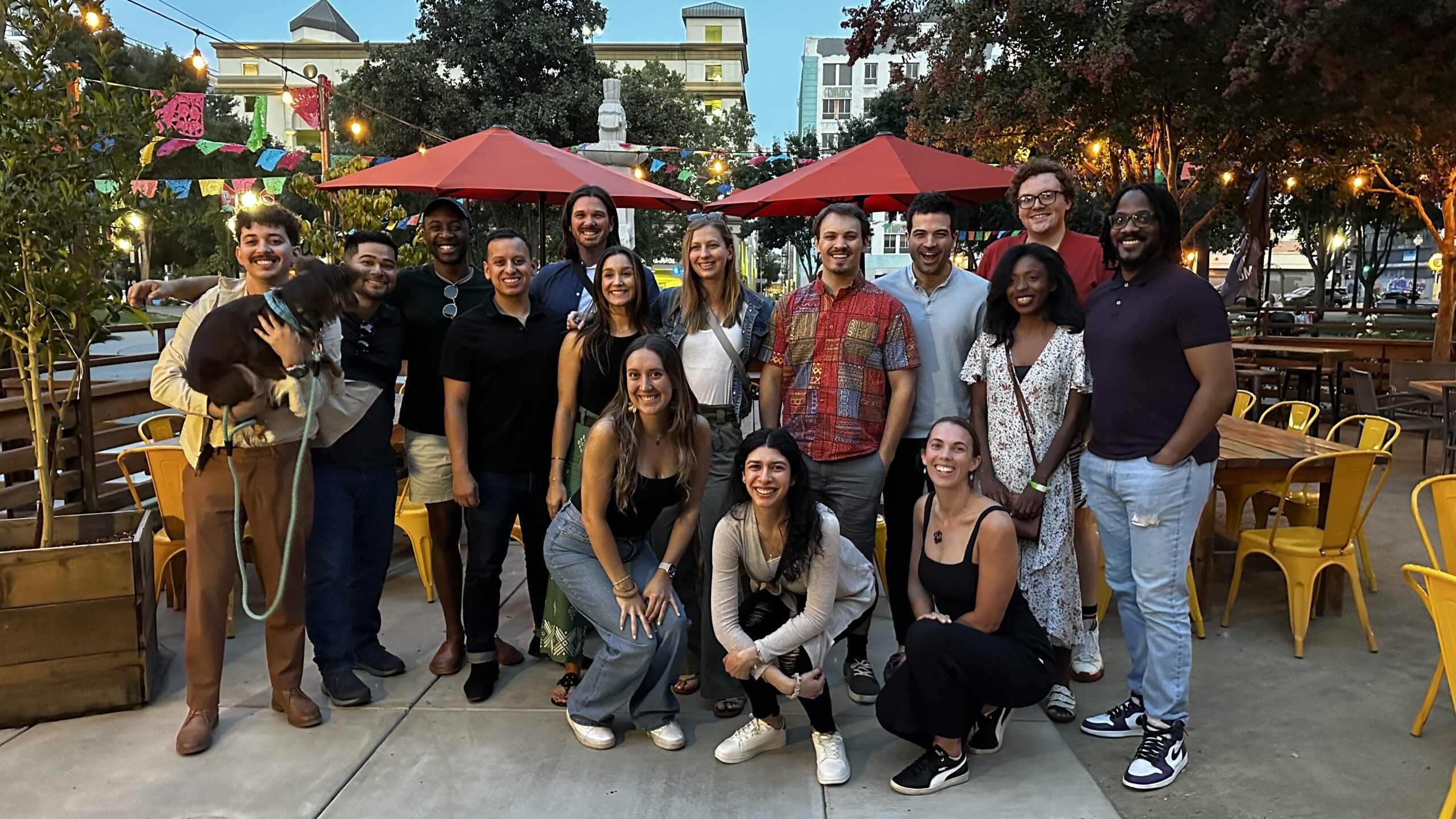
Flashback to Project Leader Adrian Rehn’s blog from five years ago: “Our team looks forward to harnessing this momentum, expanding our community partnerships, and doing another mind-blowing thing in the not-too-distant future.”
Five years and one pandemic later, the Sacramento Hub of the Global Shapers – the youth leadership network of the World Economic Forum – has done it again! From September 22-24th, Sacramento Hub members hosted young leaders from San Francisco, Oakland, and Phoenix for a weekend full of connection, impactful dialogue, and challenging preconceived notions while showcasing the best of Sacramento’s arts and culture.
Valley Vision has been the fiscal agent for the Global Shapers – Sacramento Hub for several years. Through this formal partnership, the Sacramento Hub has access to a high-performing and trusted local nonprofit that manages its finances and records, keeping things running smoothly. For Valley Vision, the Global Shapers bring a unique connection to the global community not found in other young leaders groups, which further boosts VV’s toolset in advancing the livability of the Sacramento region.
Sacramento: More than Just a Capital
The 2023 Global Shapers West Coast Retreat, as it was billed, was a revelation for many in that it shattered preconceived notions about Sacramento. While often seen only as just the capital of California, Sacramento proved to be much more. As Amy Vatcha, a San Francisco Global Shaper, put it:
“From the innovations in indoor farming & microgreens, to the art walks/art exhibitions/murals, to the salsa and bachata night at Dance on the Edge on the waterfront, I experienced the depth and variety of what Sacramento has to offer.”
Members of the Sacramento Hub were encouraged to shape the retreat based on their own connections to the city and their interests, including but not limited to:
- Guided tours of Sacramento’s many murals and art installations
- A private tour of the California State Capitol building
- A meet-and-greet with local urban agriculture leaders and entrepreneurs
- Salsa dancing lessons on the Old Sacramento Waterfront
- Leadership development sessions and cross-Hub skill-building
Connecting Young Leaders Beyond Boundaries
Beyond its role in showcasing Sacramento’s vibrant culture, the retreat emphasized the importance of connecting young leaders outside of their existing networks to think globally, and act locally. Adam Shipley, the Phoenix Hub’s curator, noted:
“Understanding perspectives across industries, demographics, and geographies helps us all create and maximize our community impact. [The] Sacramento Hub took the first proactive step in launching new dialogues.”
With this emphasis, the retreat underscored the significance of breaking down barriers and fostering a more holistic understanding of the challenges and opportunities facing our communities. It demonstrated that when young leaders unite with open hearts and minds, they can collectively address pressing issues and create a more interconnected, prosperous world.
Authentic Fellowship and Community Connection
Throughout the retreat, Shapers experienced the commitment to authenticity that has made the Sacramento Hub a long-lasting group. As Raphaël Tshitoko, San Francisco’s Vice Curator, put it:
“I can see how they’ve carefully nurtured their connection within their Hub, leading to genuine enjoyment of each other’s company, to how they’ve nurtured their connection to their community, intentionally creating spaces of togetherness but also being connectors by associating with and supporting leadership in their own neighborhood.”
Sacramento Hub members emphasized the importance of deep camaraderie rooted in shared values and experiences, where members actively nurture relationships within their group while also engaging passionately with their local community. This authentic bond goes beyond networking, fostering lasting connections and a sense of trust, unity, and shared purpose among its members.
Ultimately, the West Coast Retreat was a resounding success, leaving participants feeling optimistic and energized for their future involvement with their communities. The Sacramento Hub could not have pulled off this production without the help of our fantastic sponsors: Balanced Body, UC Davis Graduate School of Management, Councilmember Karina Talamantes, Revolution Winery, and our longstanding fiscal agent, Valley Vision.
To keep up with Valley Vision’s work to advance livability in the Sacramento region, subscribe to our Vantage Point email newsletter!
Valley Vision to Support New USDA Regional Food Business Center
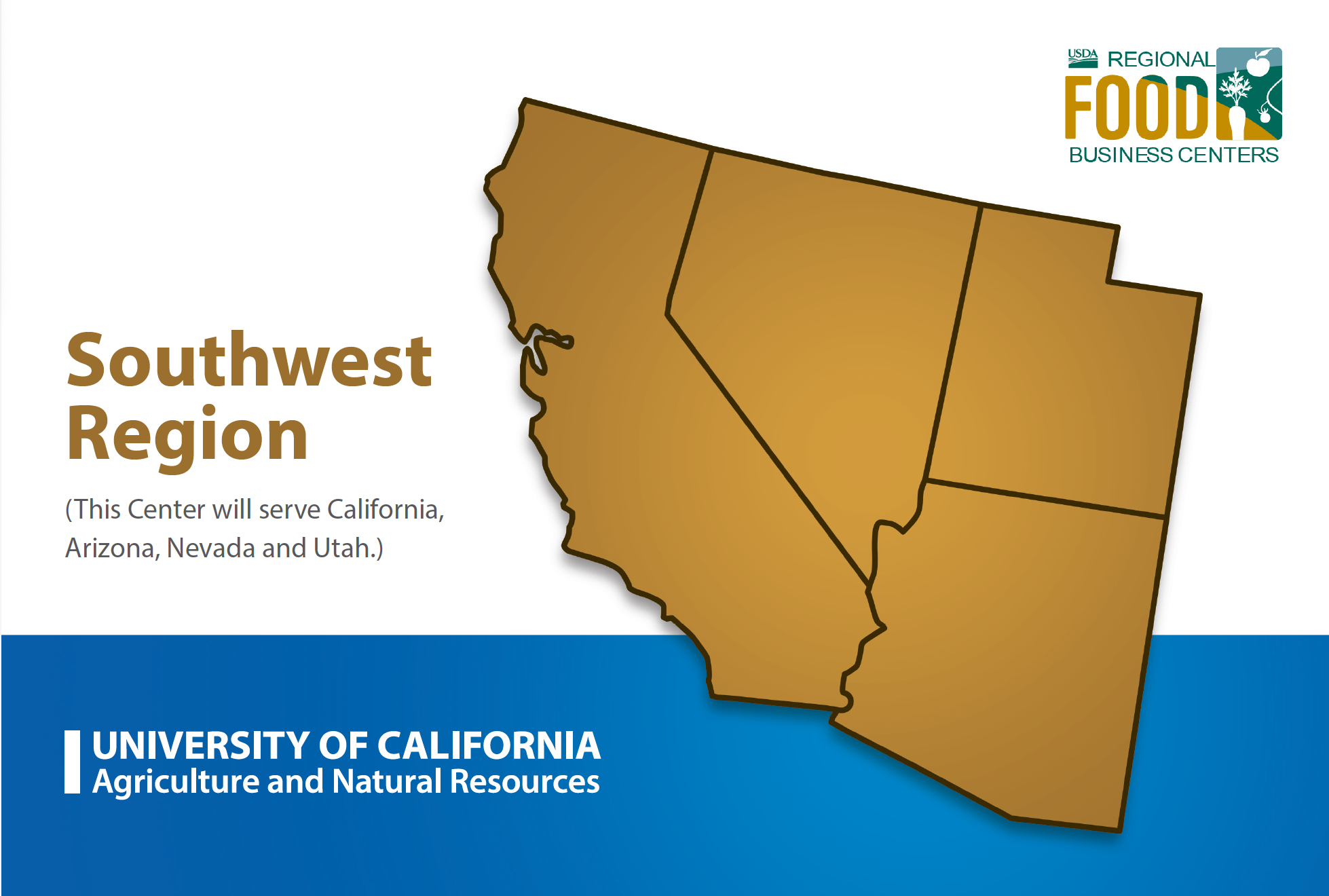
As announced earlier this month, Valley Vision is proud to be part of the new USDA Southwest Regional Food Business Center—one of 12 new Centers across the country that will support a more resilient, diverse, and competitive food system by providing assistance to strengthen local and regional supply chains. The University of California Agriculture and Natural Resources (UC ANR) is the lead applicant for the Center, and Valley Vision will serve as the Hub Director.
“The Regional Food Business Centers, along with investments through the Resilient Food Systems Infrastructure Program, will create new and expanded local market opportunities which will improve farm income, create good paying jobs and build greater resilience in our overall food system,” said Agriculture Secretary Tom Vilsack.
The Southwest Center covers California, Nevada, Arizona, and Utah. Tribal nations and Colonias Communities along the Southern border are also included. Through its network of partner organizations, the Southwest Center will conduct place-based technical assistance and capacity-building across this four-state region. The goal of the Center is to build a ‘coalition of coalitions’ that delivers multi-sector coordination efforts and business development programs to strengthen local producers’ economic viability, improve the supply chain’s resilience, and center equity in regional food systems.
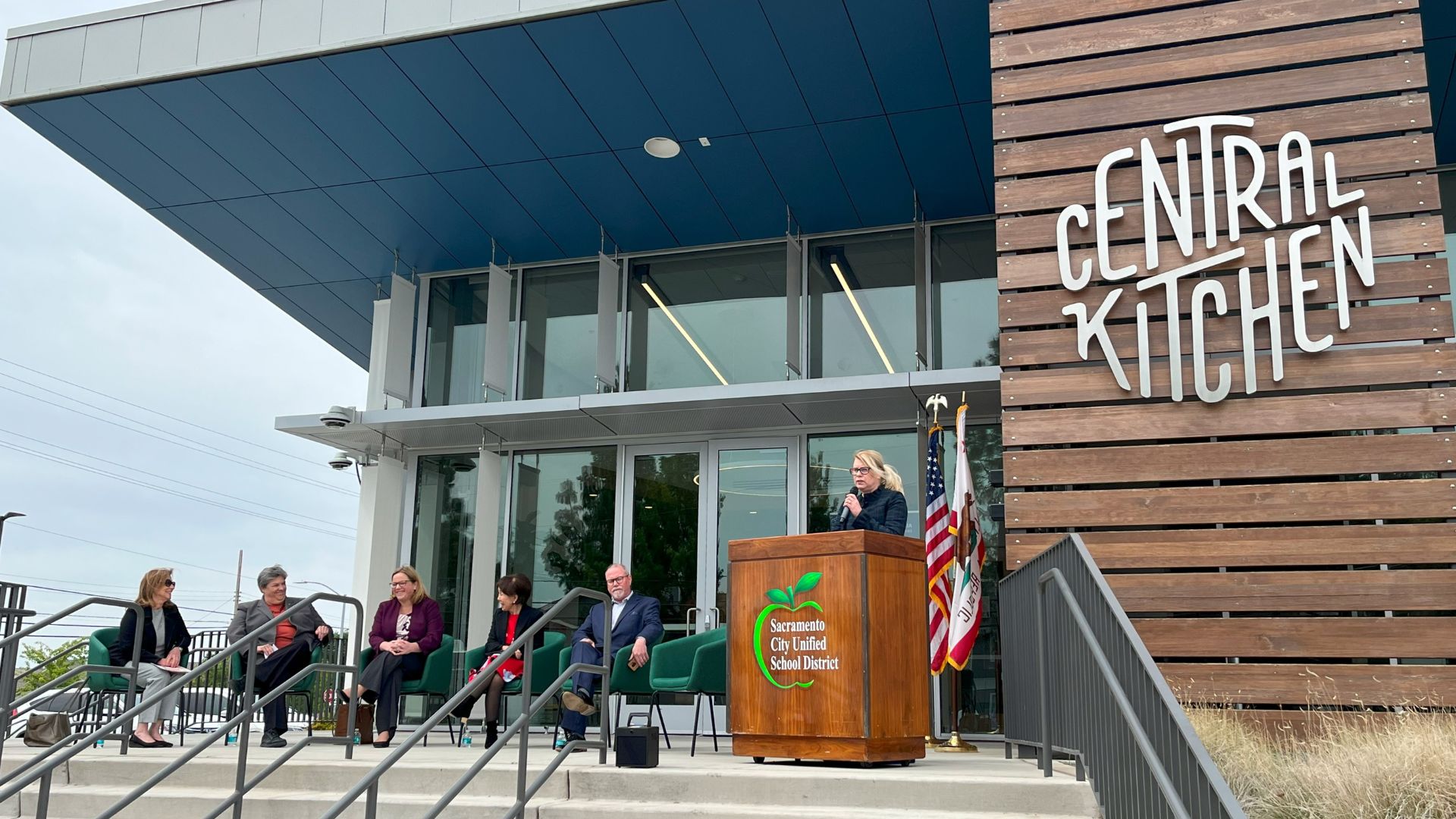
The Southwest Center was formally announced on May 3rd at Sacramento City Unified School District Central Kitchen. Valley Vision helped coordinate the event, which featured Jenny Lester Moffitt, Under Secretary of USDA Agricultural Marketing Service; Congresswoman Doris Matsui, (CA-7); Glenda Humiston, Vice President of UC Agriculture and Natural Resources; Sacramento Supervisor Patrick Kennedy and SACOG Board Chair; Diana Flores and Kelsey Nederveld from Sacramento City Unified Nutrition Services; and Trish Kelly, Managing Director, Valley Vision.
With local asparagus, potatoes, and grass-fed braised beef served out of the Central Kitchen’s Food Truck—showcasing how Fresh Food to School across the District is sourced from local farmers and prepared at the Central Kitchen—the event highlighted the strength of the local food system, including our diverse partnerships and networks that span across the Sacramento region, exemplifying the goals of the new Center.
The event concluded with a tour of the Central Kitchen, encompassing 50,000 SQ of warehouse space and 50,000 SQ of the facility itself. This tour was an opportunity to demonstrate the food system infrastructure we are building in this region, as well as the types of projects the Southwest Center will support.
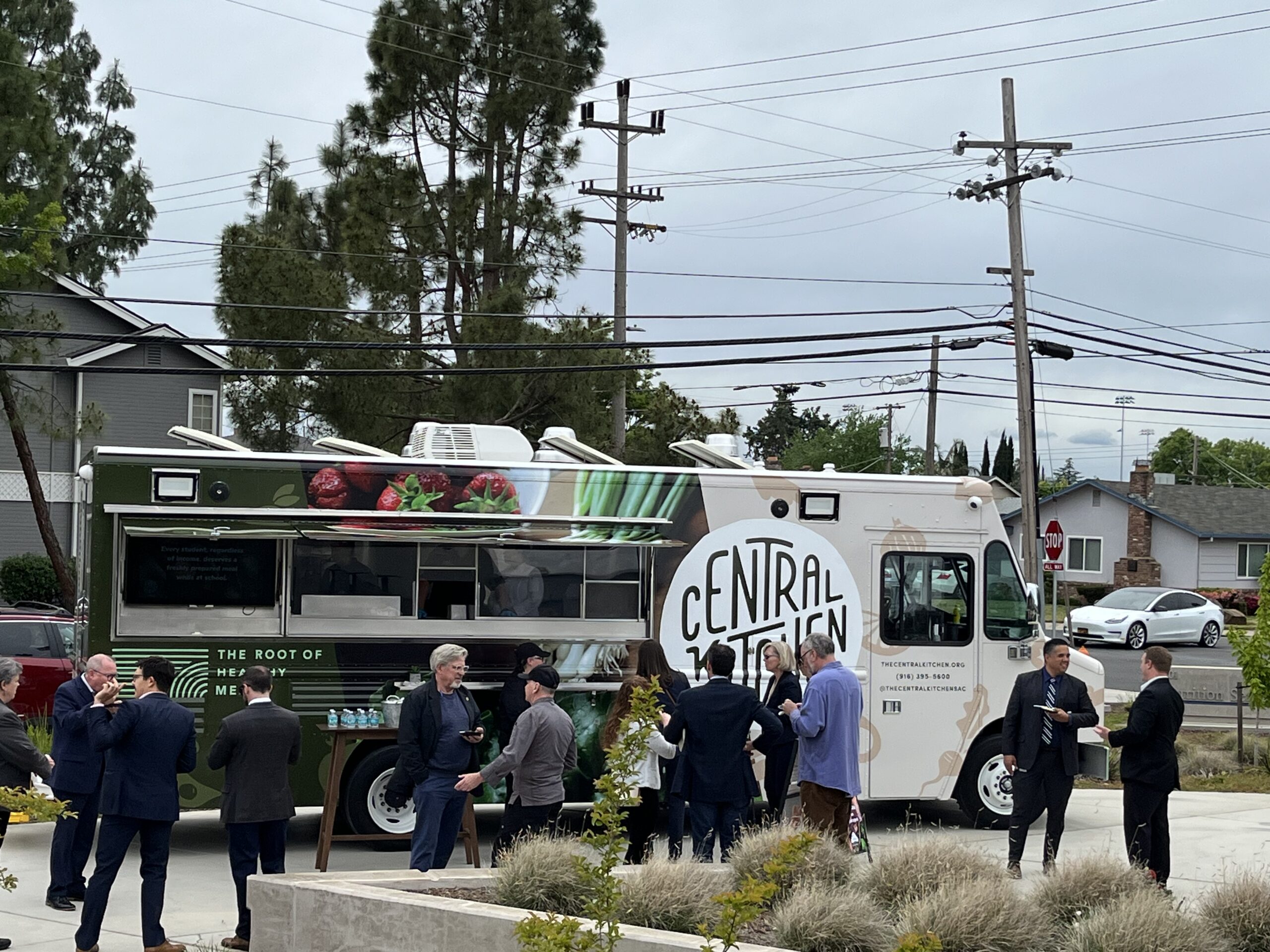
The Southwest Center and the Tour of the Central Kitchen would not be possible without the support of Secretary Moffitt, with whom we had the pleasure of meeting the week before during the 2023 Cap to Cap program; Congresswoman Matsui for being a champion for our region’s food system; Supervisor Kennedy, for his leadership that led to the development of the Central Kitchen; and Diana Flores and Kelsey Nederveld, who worked tirelessly to get the Central Kitchen operational. We are extremely grateful for the leadership of Glenda Humiston and her team in supporting diverse partners across the Southwest Region by anchoring the development and implementation of this project.
Trish Kelly will serve as the Director for the Center, supporting network coordination for outreach activities across the four states, development of community partnerships, and knowledge sharing. Grace Kaufman will support Valley Vision’s efforts, including managing stakeholder engagement, strategic planning, network coordination, outreach activities, and resource-sharing across the Southwest region.
The USDA grant will encompass five years and will contribute to Valley Vision’s capacity to serve as a backbone for the Sacramento region’s food and agriculture system. The project is anticipated to begin this summer.
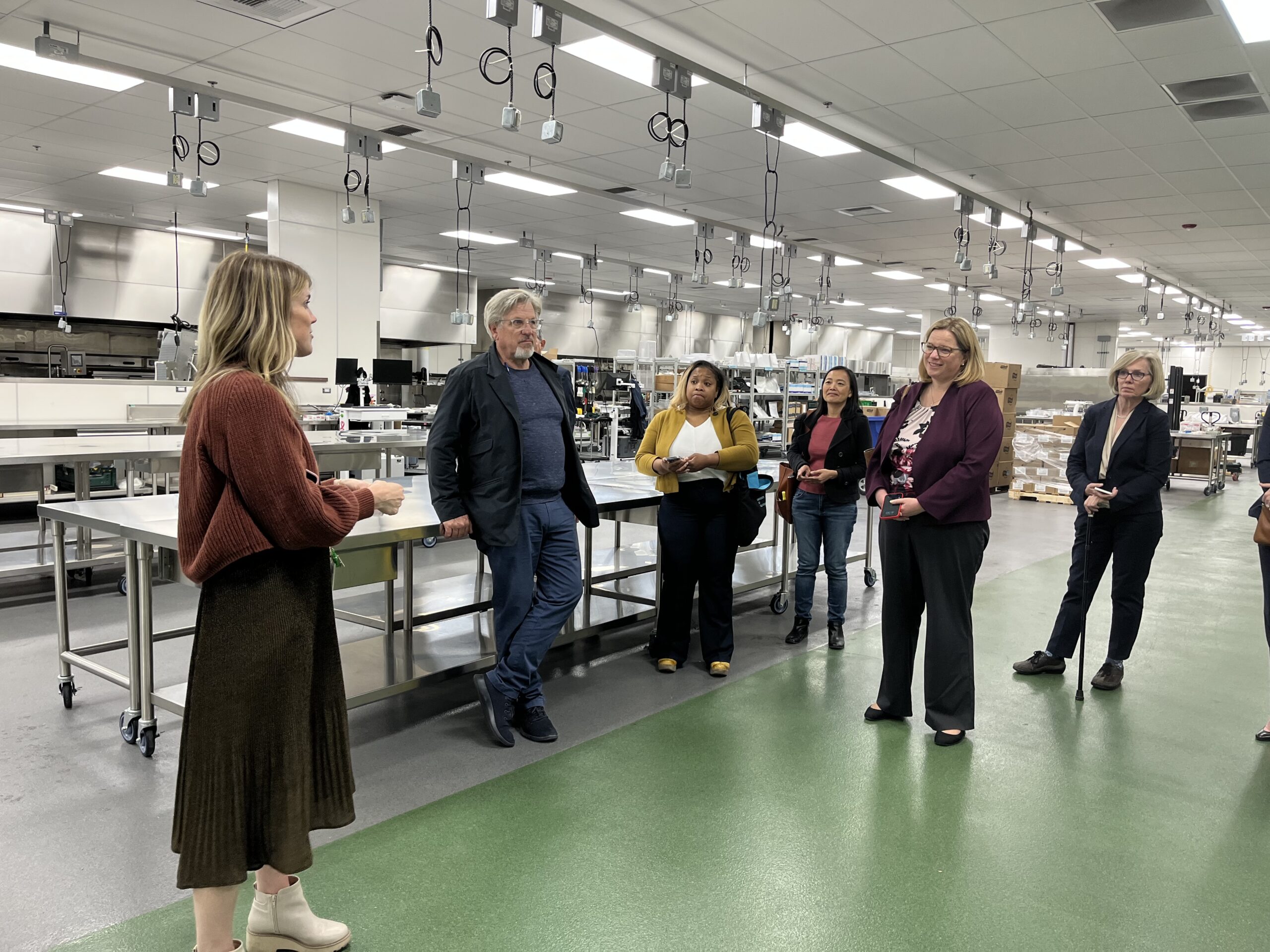
The Center’s network of Partners includes the California Department of Food and Agriculture (CDFA); California State University – Chico and Fresno; Occidental College; the Riverside Food System Alliance; the San Diego Food System Alliance; the University of California – Santa Cruz and Davis; Valley Vision; the Arizona Department of Agriculture; the Local First Arizona Foundation; the University of Arizona; the Nevada Department of Agriculture; the University of Nevada – Reno; the Utah Dept. of Agriculture; and Utah State University.
Center Collaborators include a wide network of organizations across the four states, including the Community Alliance with Family Farmers (CAFF); the Center for Good Food Purchasing; California FarmLink; Kitchen Table Advisors, Health Care Without Harm, and many others.
You can find more information about the program and the other Centers here: https://www.ams.usda.gov/services/local-regional/rfbcp.
To read more about the Sacramento Region’s food system projects and the work Valley Vision is supporting, go to WeAreFarmToFork.org.
If you’d like more information or to get involved with Valley Vision’s food and agriculture work, please contact us at FoodAndAg@ValleyVision.org.

Recap: Yolo Food Hub Network’s Barn Warming & Celebration in Esparto, CA
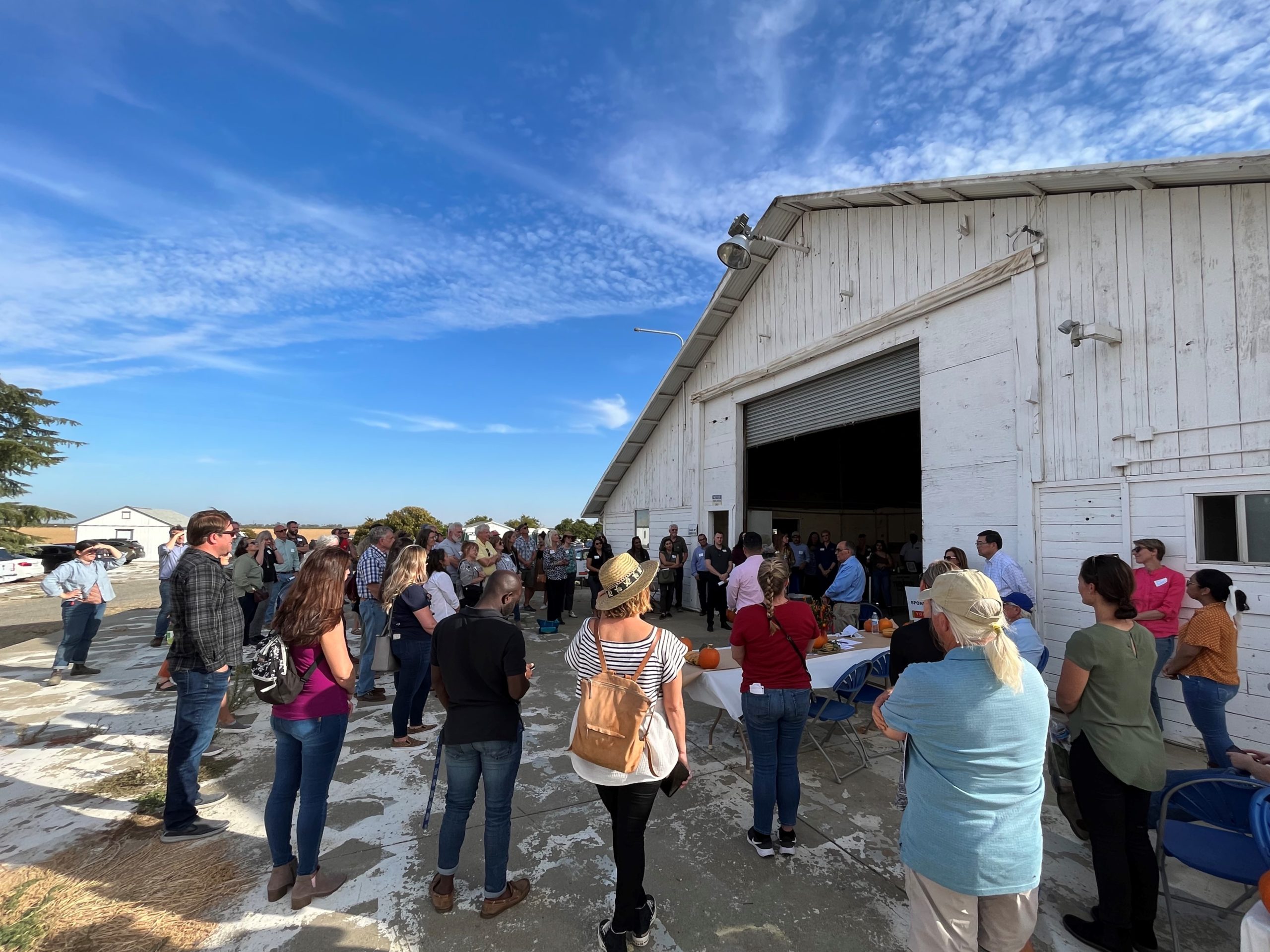
On Friday, October 21st, 2022 – a new home for food and agricultural infrastructure opened its doors to more than 115 people from across the region. The historic 22,000 square-foot Oakdale Barn, located in Esparto, California is over 100 years old, and as the anchor facility for the Yolo Food Hub Network, it will continue to serve the region’s agricultural industry. The Barn facility will be renovated to aggregate, process, store, package, and distribute produce grown in Yolo County and throughout the region. The facility will increase consumer and buyer access to healthy and diverse local foods, improve farmer and market sales, and will strengthen relationships between farmers, institutions, and local communities. It will open new markets for growers and food producers and will enable large institutions, such as hospitals, event centers, and schools to purchase locally grown foods. The barn warming, hosted by the Yolo Food Hub Network and Valley Vision, garnered the support of numerous organizations and representatives across Northern California.
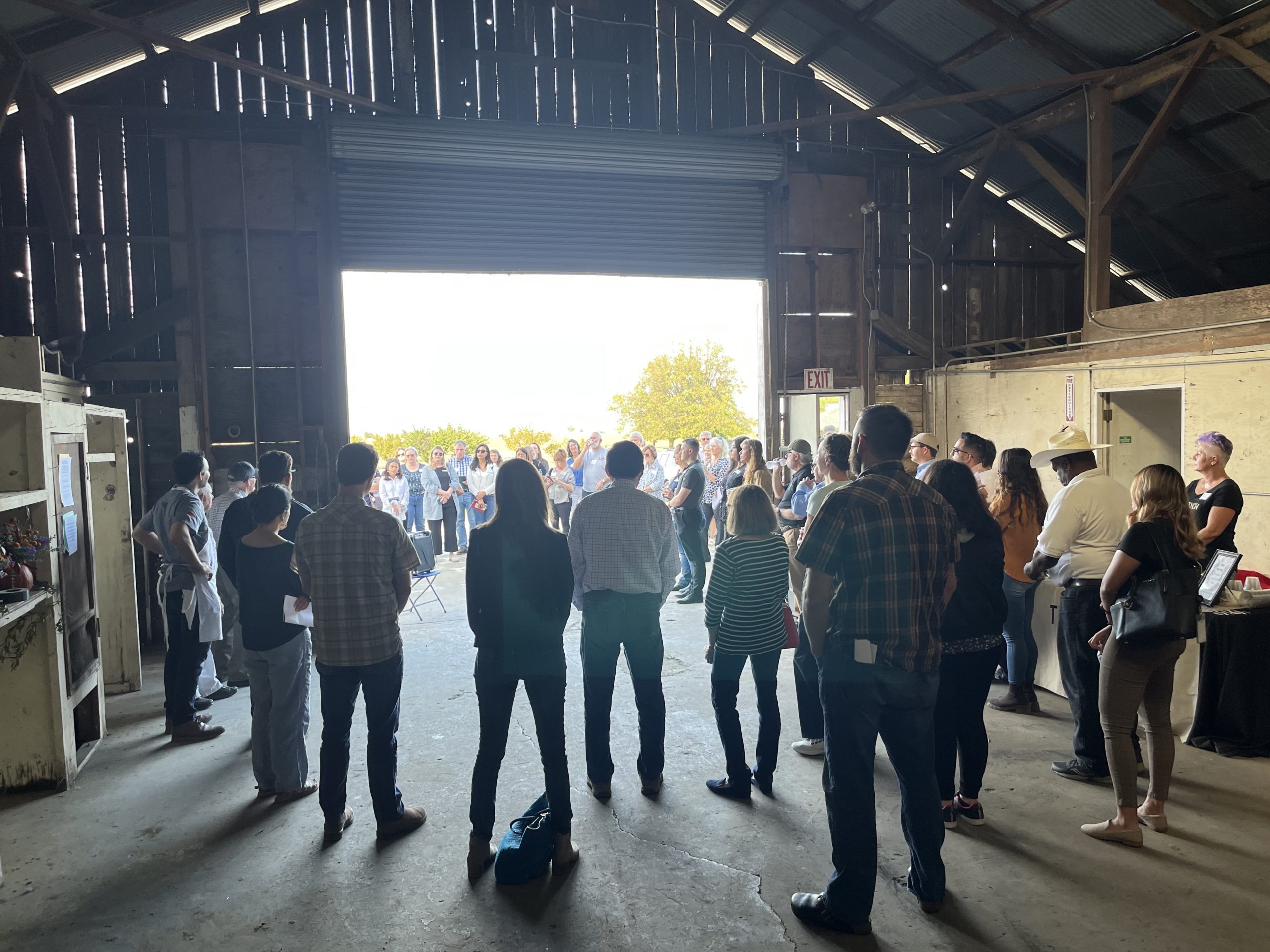
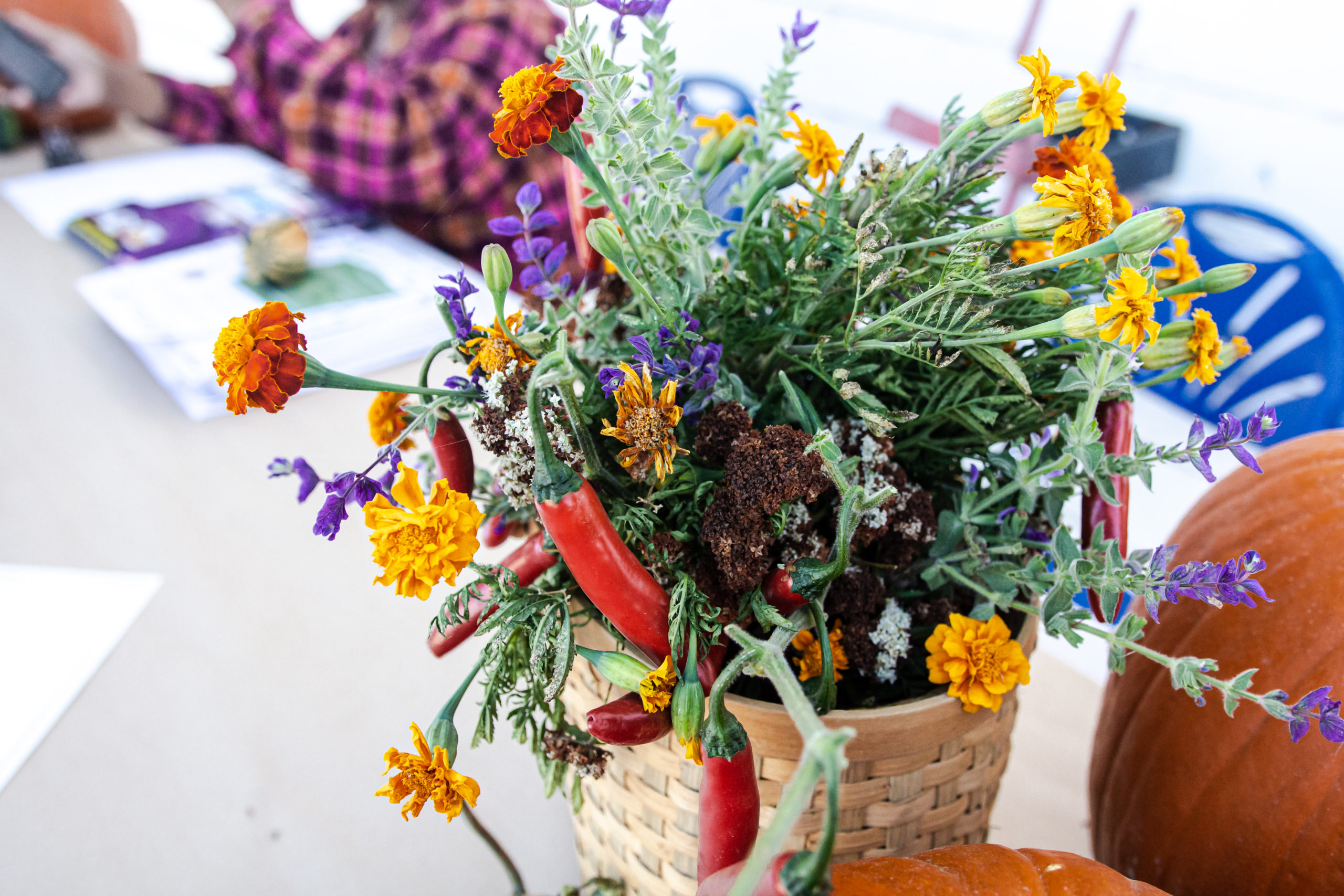
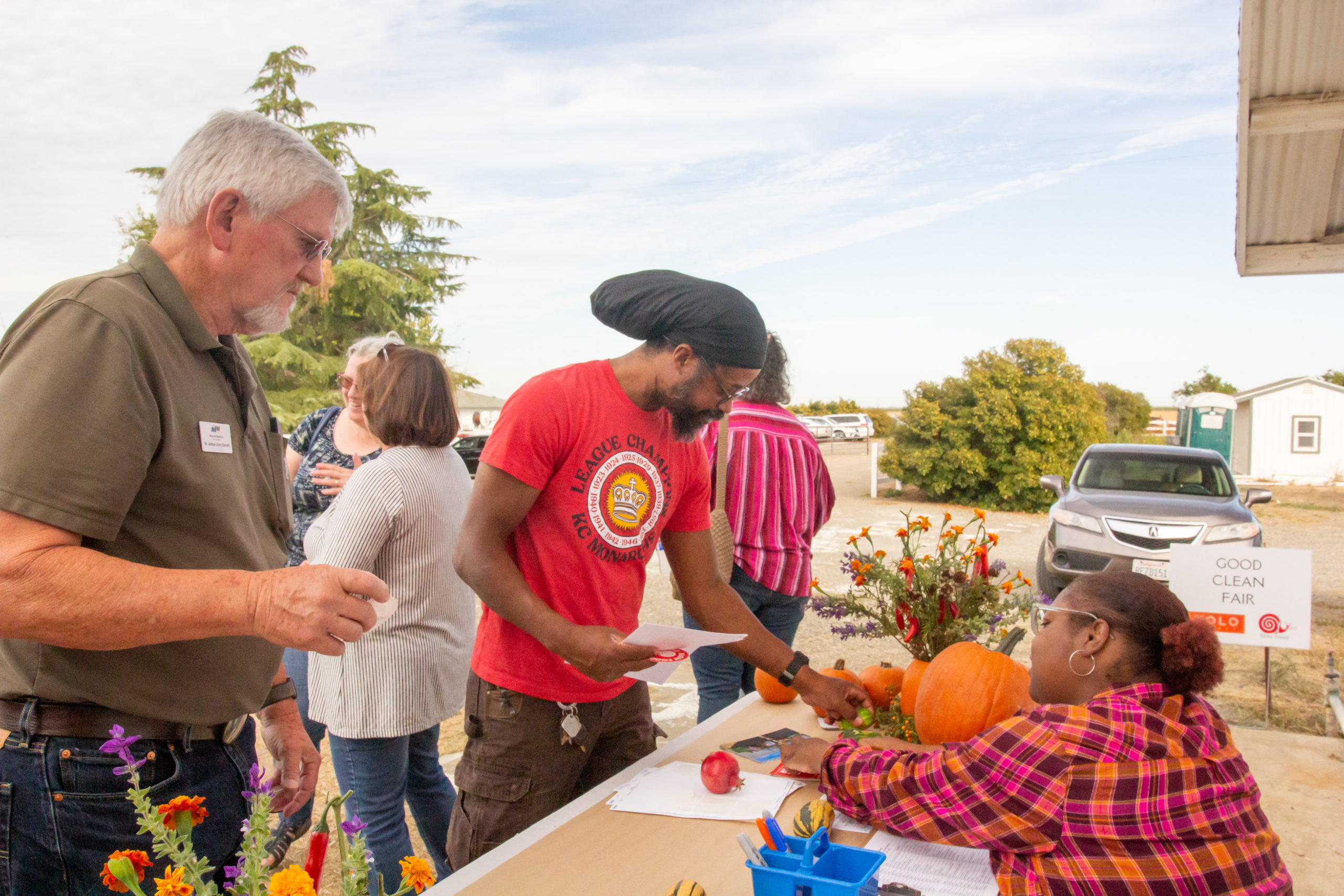
Valley Vision, on behalf of several local partners, was awarded a grant through the Local Food Promotion Program from USDA to support the planning phase of the project. Yolo County committed $2 million of American Rescue Plan funds for the site acquisition.
Food hubs help connect farmers and food entrepreneurs with regional markets and institutional buyers, such as schools, hospitals, and food banks, to access source-identified, locally-grown products. The project’s first phase developed recommendations and a funding strategy to help establish and sustain the new Yolo Food Hub Network and facility. As part of the planning phase of the Yolo Food Hub Network, the project will help farmers receive training on how to reach these institutional buyers, which will buy produce and goods from Yolo Food Hub Network partners.
The Yolo Food Hub Network project team includes New Season Community Development Corporation (NSCDC) – the project developer, Capay Valley Farm Shop (CVFS), Yolo Food Bank, Durst Organic Growers, Spork Food Hub, Esparto Train Station, Hatamiya Group, Kitchen Table Advisors, and Valley Vision as the project manager.
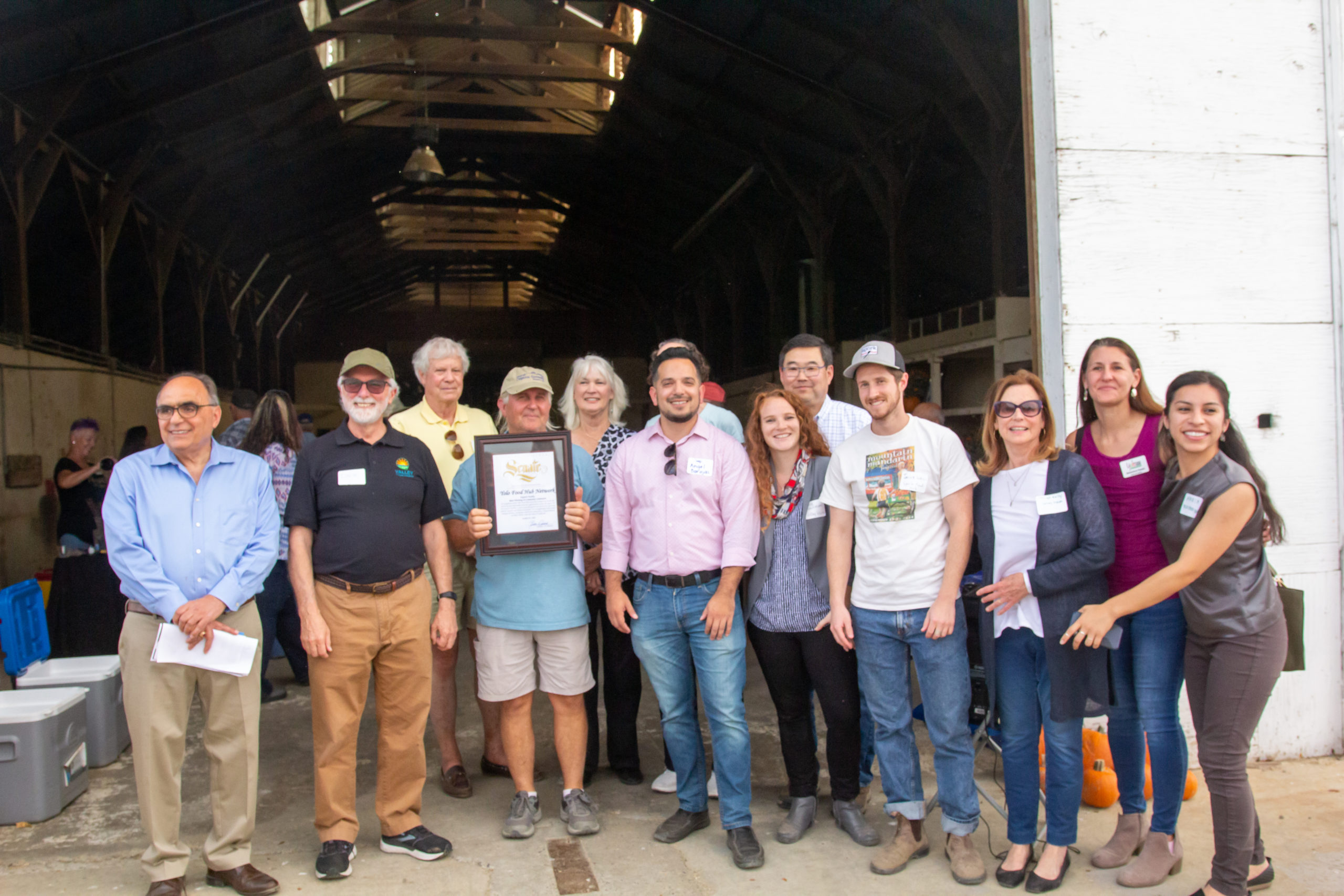
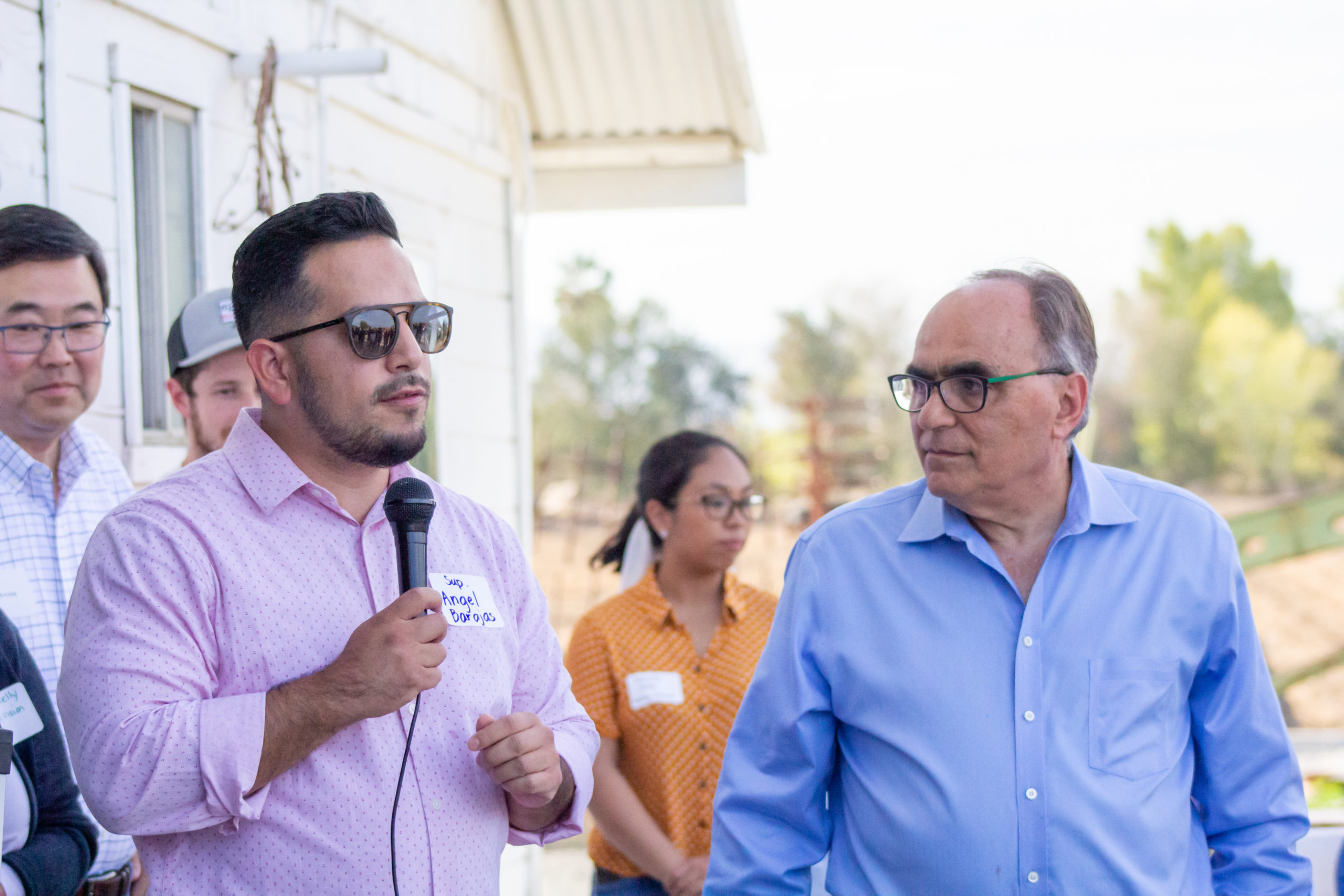
Many elected officials joined the celebration, including California Assemblymember Cecilia Aguiar-Curry District 4, California State Senator Dodd of Senate District 3, (Staff present), as well as Yolo County Supervisors Angel Barajas (Chair), Don Saylor, Jim Provenza, and Woodland City Council members Tom Stallard and Tania Garcia-Cadena.
Also in attendance was James Corless, Executive Director of the Sacramento Area Council of Governments (SACOG). Through SACOG’s Rural Urban Connection Strategy (RUCS), SACOG has supported the planning and feasibility of food hubs throughout the region, including the 2014 food hub feasibility analysis, which served as the foundation for the Yolo Food Hub Network.
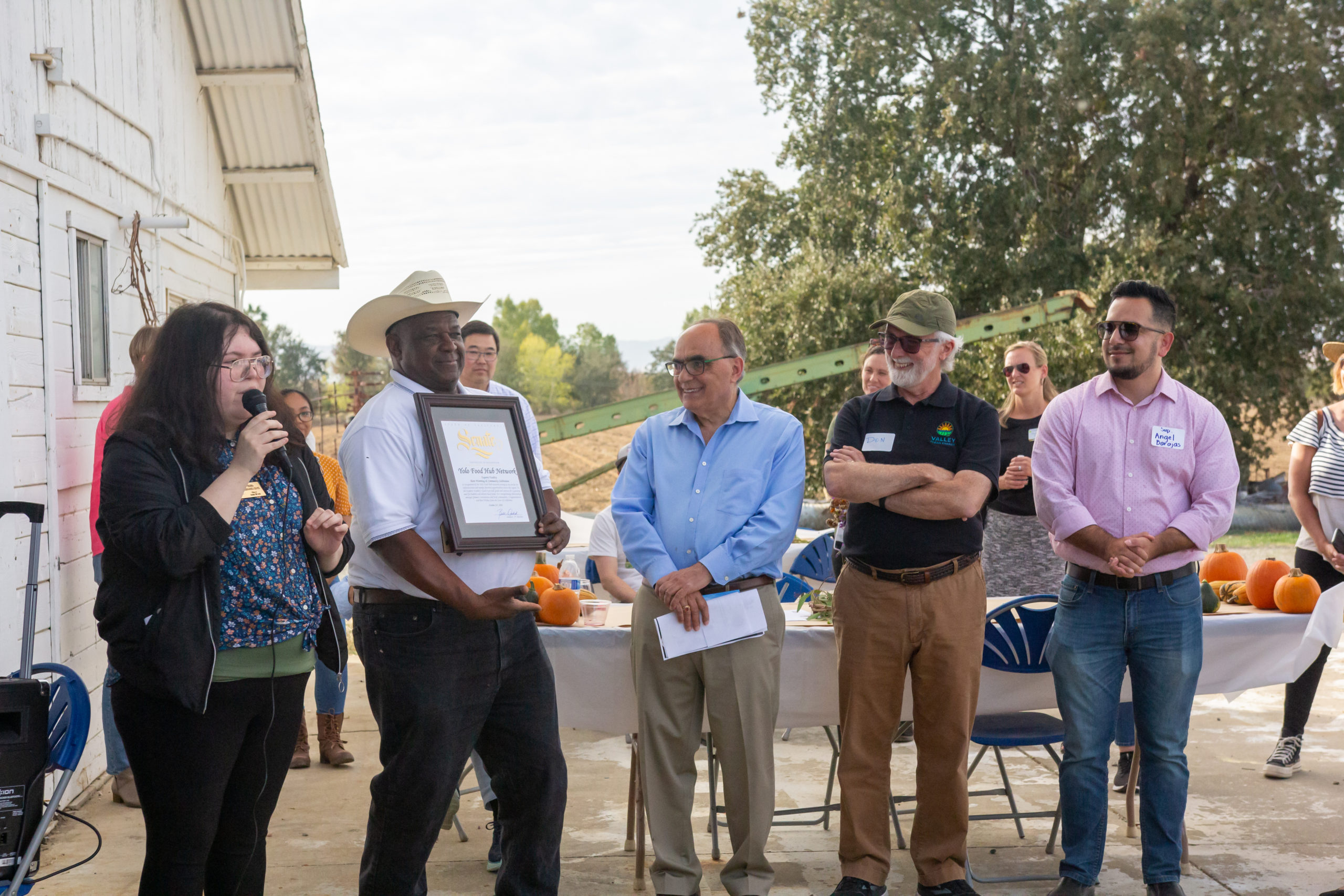
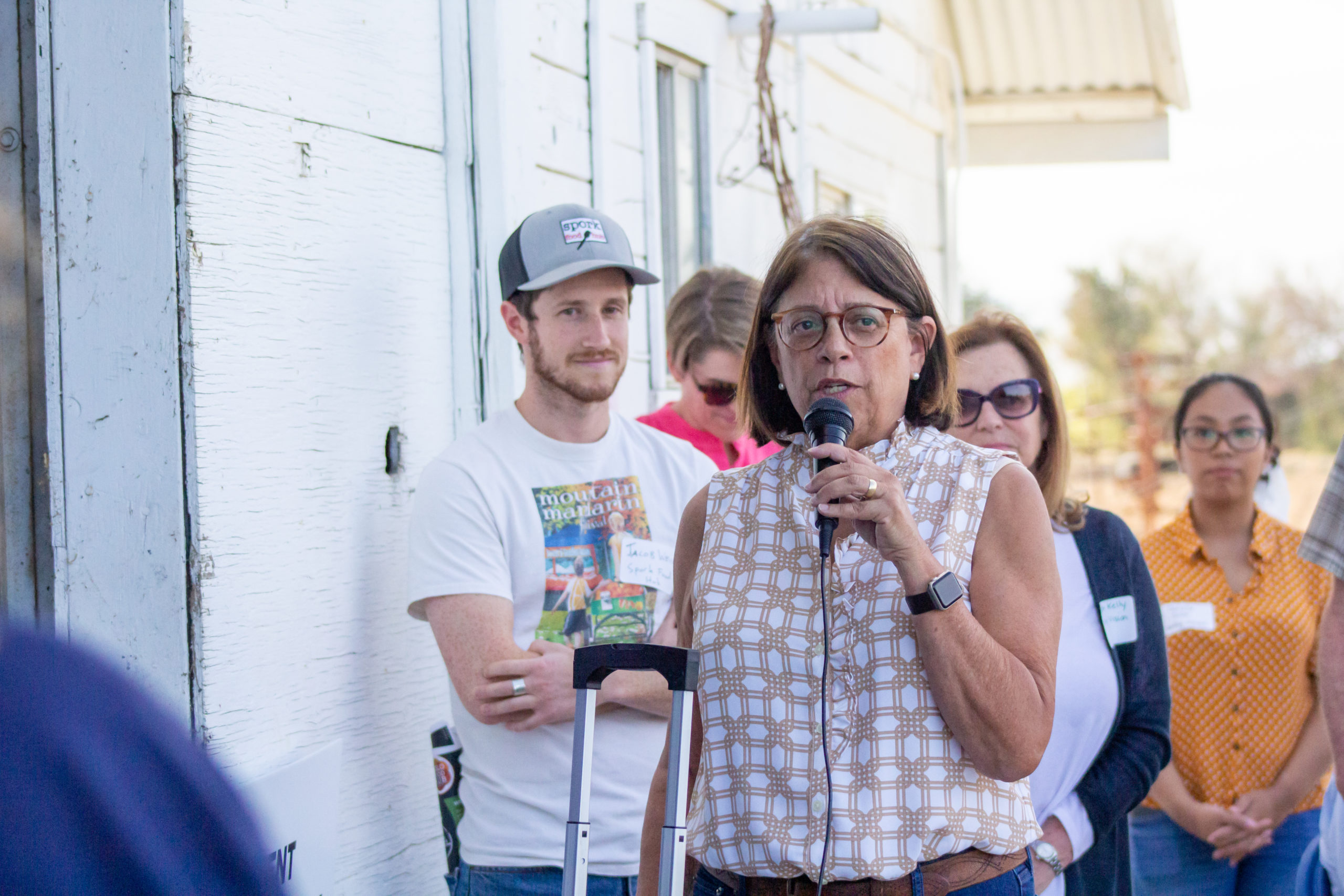
This event would not have been possible without the generous support of Slow Food Yolo, Turkovich Family Wines, and the hard work of Juan Barajas and his team. Slow Food is a global, grassroots organization, founded in 1989 to prevent the disappearance of local food, cultures, and traditions. Slow Food believes food is tied to many other aspects of life, including culture, politics, agriculture, and the environment.
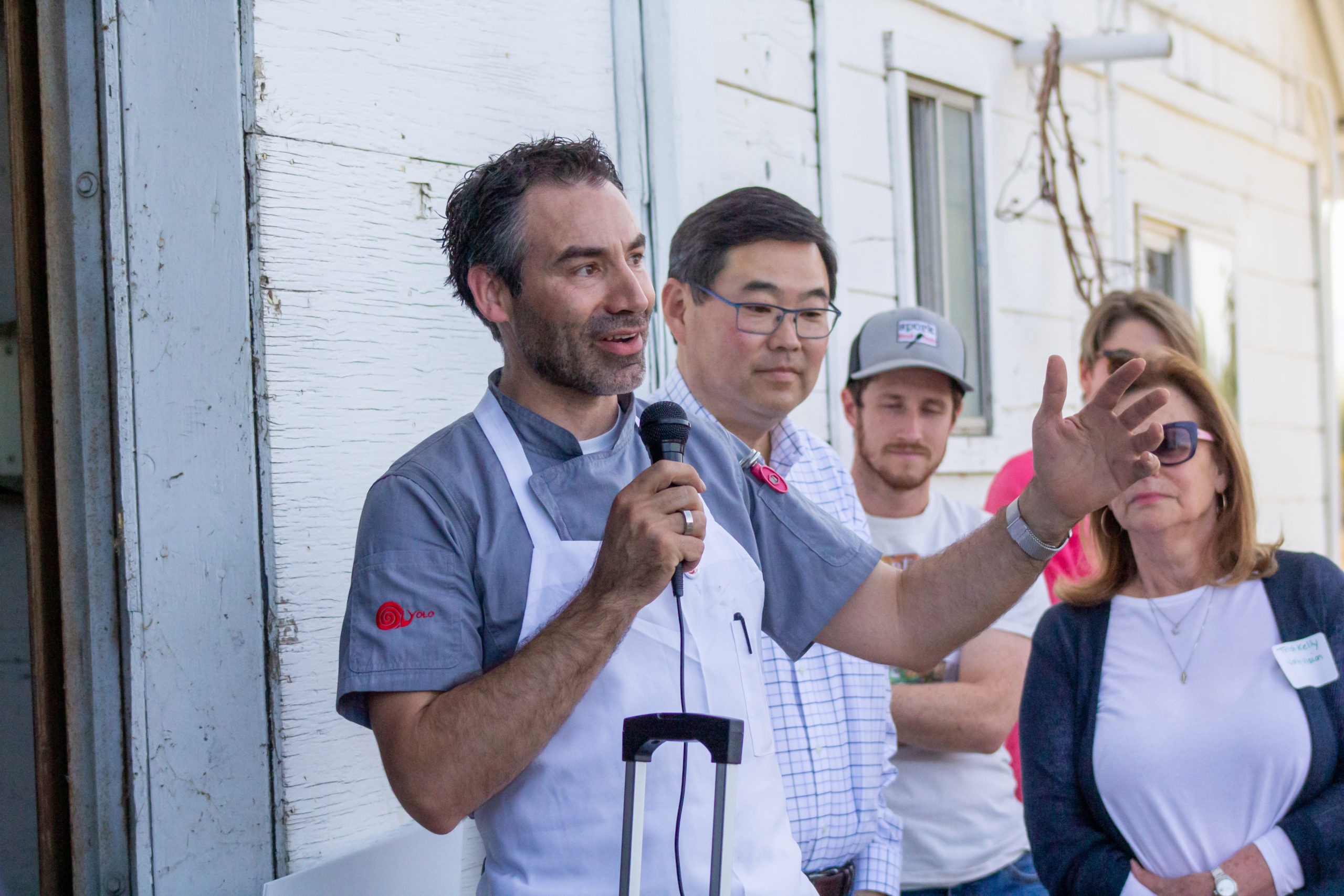
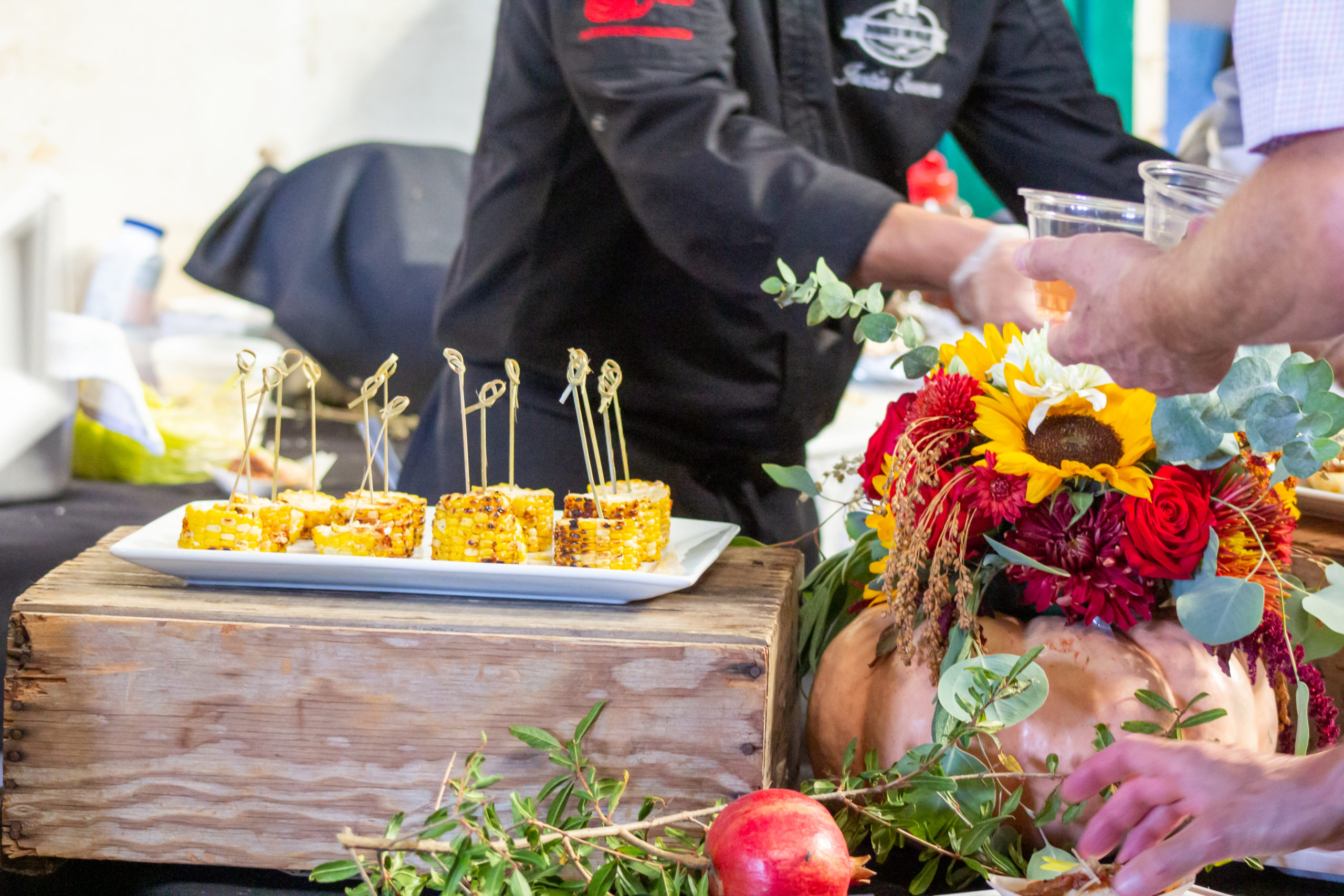

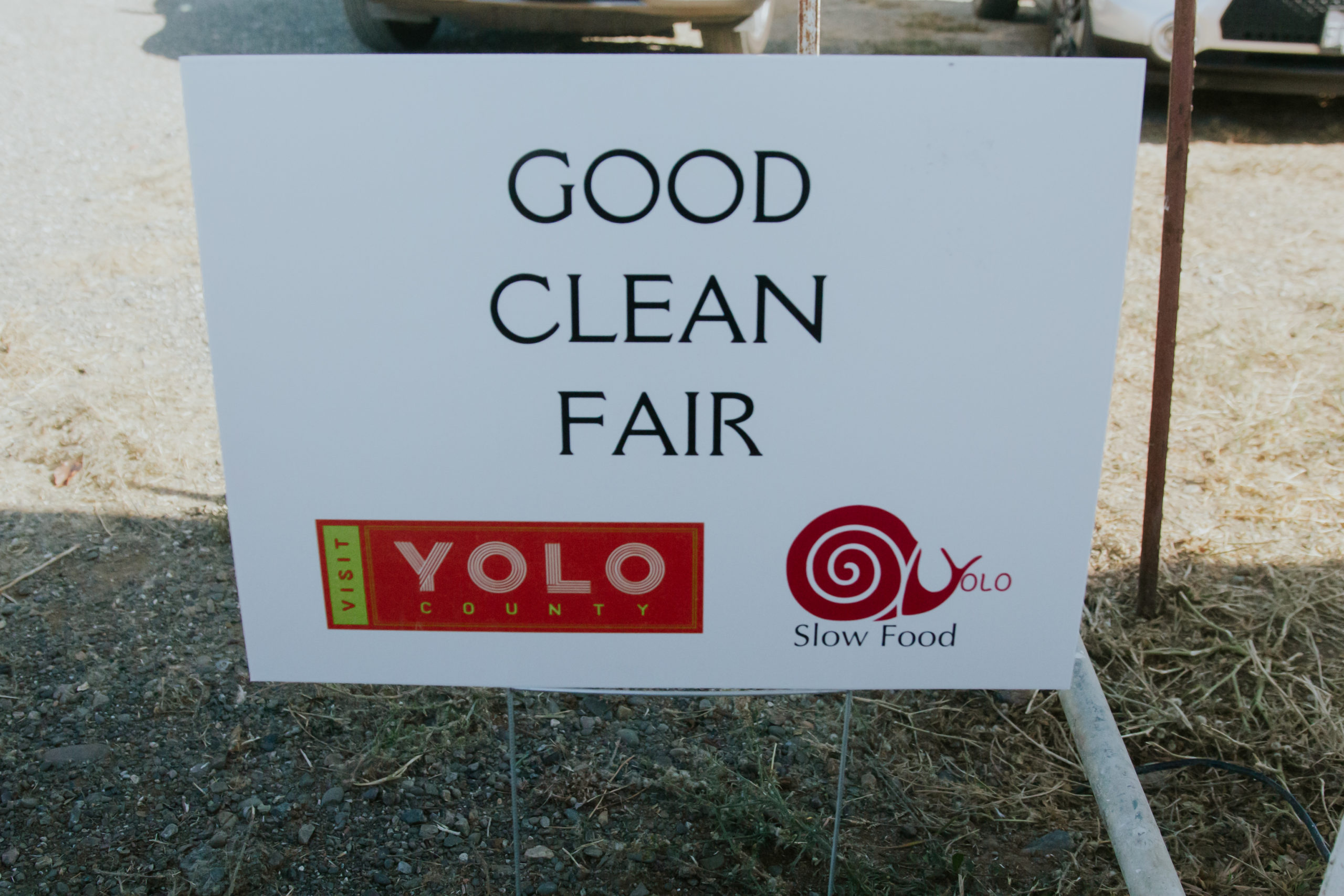
To learn more about the Yolo Food Hub Network, including past webinars and reports, visit: https://www.valleyvision.org/projects/yolo-food-hub.
For questions about Yolo Food Hub Network or if you want to receive future resources and information on the upcoming Food and Agricultural work from Valley Vision, please contact Grace Kaufman at Grace.Kaufman@valleyvision.org to be added to the listerv!
Grace Kaufman is a Valley Vision Project Manager working in the Food and Ag and Clean Economy impact areas
Watch the recap video from the Barn Warming & Celebration below!
Recap: White House Conference – Recommendations from America’s Farm-to-Fork Capital

As part of the We Are Farm-to-Fork initiative, Valley Vision convenes partners and community members to support future investments in the region’s food system.
On Tuesday, August 9th, Valley Vision held our first public, in-person event since the pandemic. The information shared by community partners during the listening session will inform the 2022 White House Conference on Hunger, Nutrition, and Health, which takes place in September. Organized under the banner of our community food system network “We are Farm to Fork,” participants included a vibrant cross-section of more than 75 people at Mulvaney’s B&L, including partners from government agencies, nonprofits, school districts, restaurants, health centers, grocery stores, and more (see Appendix A of the report for a full list of participants). It was an honor to have Maria Gallegos-Herrera, the new USDA Rural Development State Director for California, attend and provide opening remarks, as well as have staff from Congresswoman Doris Matsui and Congressman Ami Bera join us and advance the recommendations.
Using the toolkit provided by the White House Conference planners as a guide for regional input sessions nationally, our discussion focused on the following guiding pillars of the Conference:
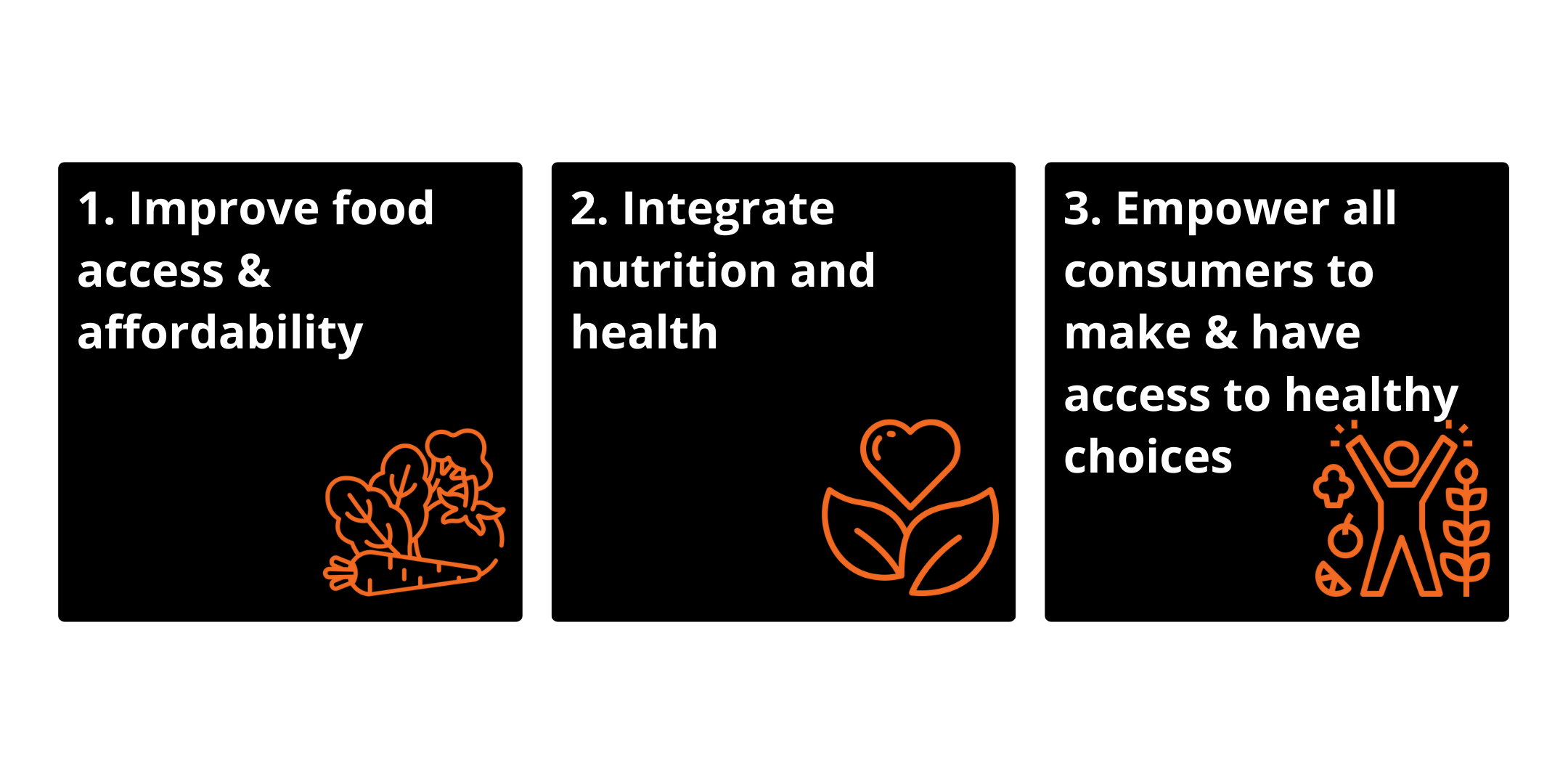
For each of these issues, our event invited input into the following questions provided by the White House Conference planners:
What specific actions should the U.S. Federal government, including the Executive Branch and Congress, take to achieve each pillar? What are the opportunities and barriers to achieving the actions? Actions should include specific policy and/or programmatic ideas and changes as well as funding needs.
What are innovative public- and private-sector activities already happening at the local, state, territory, and Tribal levels that could inform actions at the Federal Level?
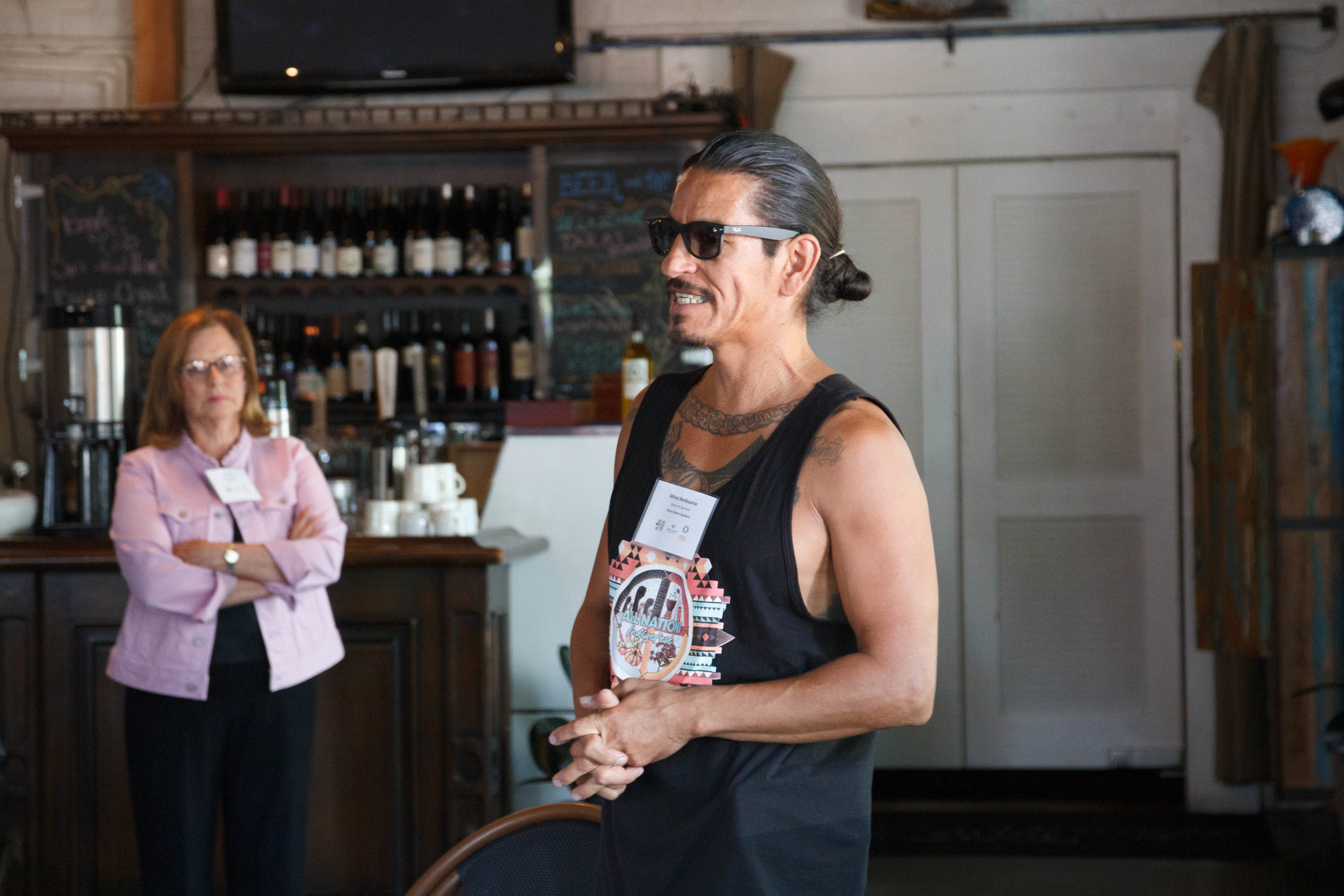
Participants gave feedback online and in-person. During the event, a cross-section of organizations provided lightning-round presentations, highlighting barriers, opportunities, proven models, and recommendations that demonstrated the breadth and diversity of partnerships, the creativity and responsiveness of solutions, and some compelling outcomes to date. These are the foundations of our recommendations to the federal government, which represent the needs and interests of the Sacramento Region. The recommendations range from streamlining specific regulations and providing increased flexibility, to investing in impact models that can be scaled and replicated across the country.
Several clear themes and recommendations were identified in the convening, that if adopted, would greatly facilitate systemic solutions to systemic challenges within our region and across the country. The recommendations reflect the Sacramento region’s partner-driven solutions that were effective in trying to address the rapid increase in food insecurity levels, lack of access to healthy foods, major supply chain gaps, and accelerated job and income loss during the start of the pandemic. Several strong models shared during the event are tangible, tested, and outcome-driven, and are reflected in the recommendations and in the supporting materials.
The recommendations build off the 2021 Sacramento Region Food System Action Plan, developed in Fall 2021 by Valley Vision in partnership with the Sacramento Region Community Foundation. These activities help position the Sacramento region’s future as a global innovator and leader in sustainable agriculture, food, and health.
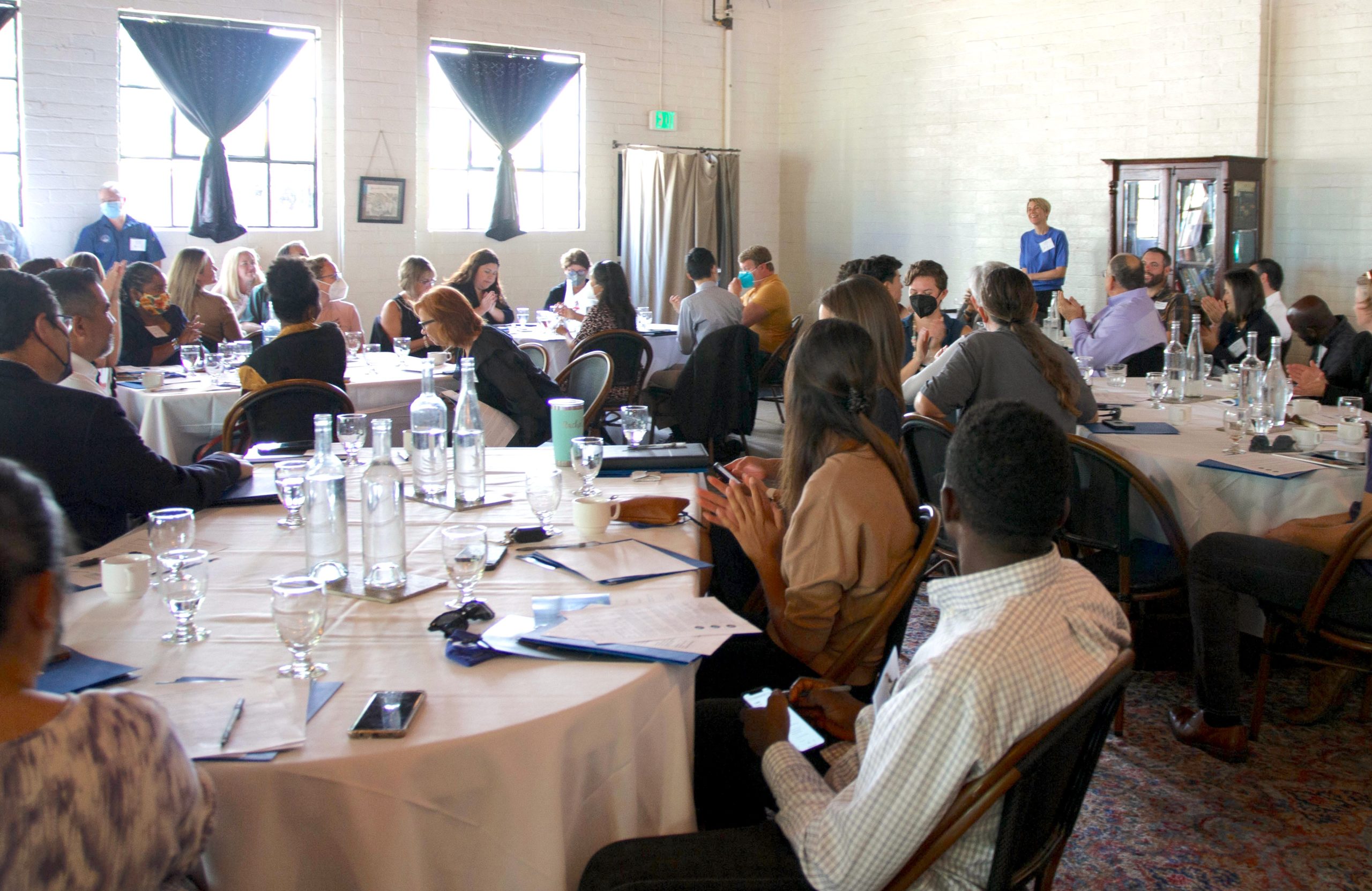
Special thanks to our board members who attended, including Linda Cutler, Shawn Harrison, Chelsea Minor, Clay Nutting, Meghan Phillips, and Lori Rianda. Moving forward, we will incorporate this document into future efforts as we work to reduce food insecurity and strengthen the region’s food system.
To keep up with Valley Vision’s Food and Agriculture work to advance livability in the Sacramento region, email Grace.Kaufman@valleyvision.org to be added to the listserv!
Grace Kaufman is a Valley Vision Project Manager working in the Food and Ag and Clean Economy impact areas
New Project to Advance Yolo Food Hub
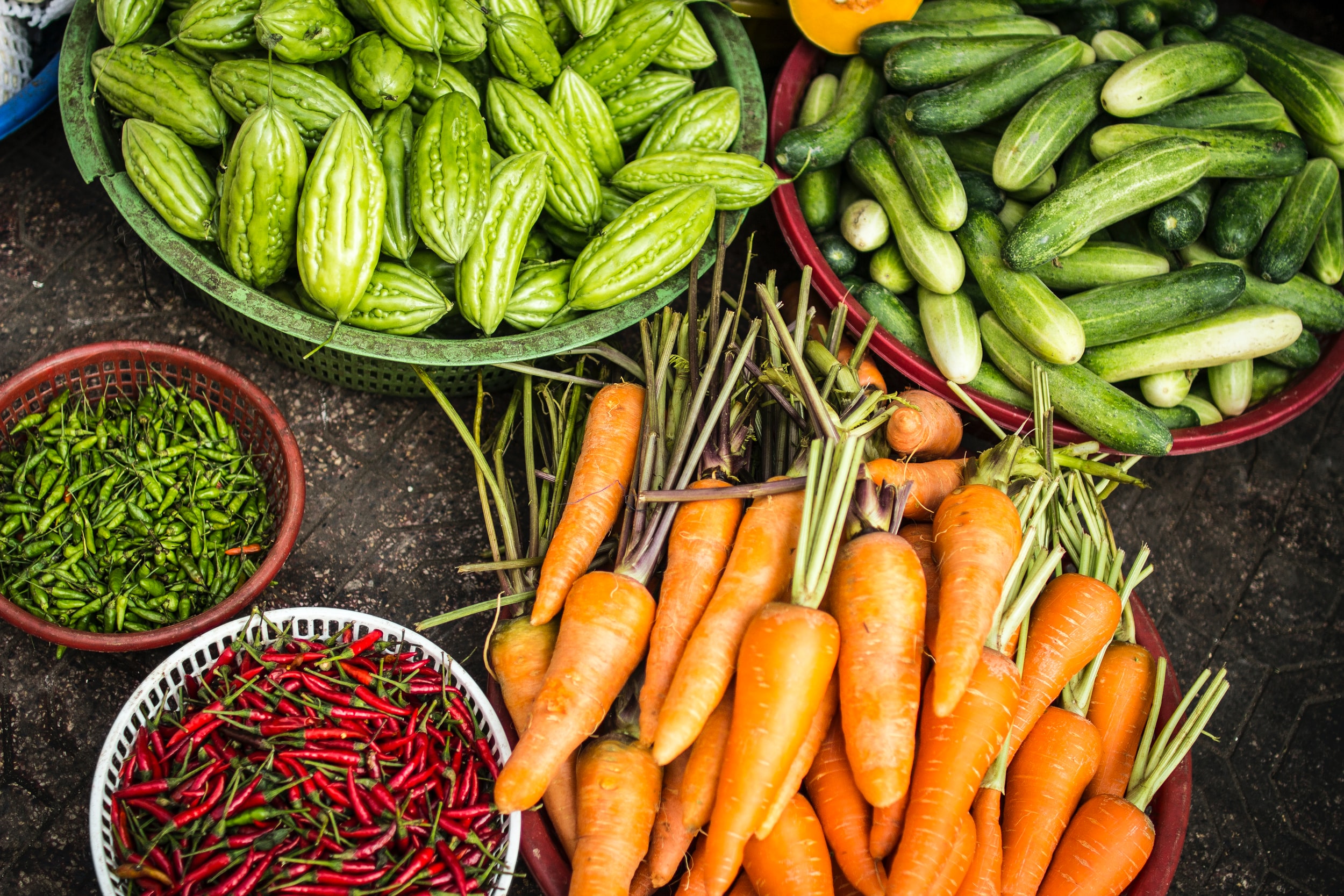
Developing the Yolo Food Hub will strengthen local farms, improve healthy food access, and provide a healthier food and farming ecosystem throughout the Greater Sacramento Region.
Valley Vision, on behalf of several local partners, has been awarded a grant from the US Department of Agriculture’s Local Food Promotion Program (LFPP) to support the establishment of the Yolo Food Hub.
Yolo Food Hub is a new facility that will aggregate, process, store, and distribute farm produce grown in Yolo County and surrounding areas on behalf of farmers in the area. Located in Esparto, Yolo Food Hub will expand food production and distribution channels in Yolo County and the Greater Sacramento Region, while at the same time improving healthy food access, stabilizing food markets, increasing employment and job training opportunities, and providing pandemic relief for farmers.
“Yolo Food Hub will help establish a more diverse and equitable food system – one that allows small and mid-size producers to sell fresh, nutritious food more affordably to schools, institutions and agencies, and to swiftly and efficiently donate oversupplies to lower-income and precariously-employed consumers.” – Dr. Maria McVarish, Esparto Community Member
Food hubs help connect farmers and food entrepreneurs with regional markets and institutional buyers, such as schools, hospitals, and food banks to access source-identified, locally grown products. The funds from this LFPP grant will be used to generate recommendations and a funding strategy to establish and sustain the new Yolo Food Hub. As part of the grant, farmers will receive training on how to reach institutional buyers, such as schools, hospitals, and restaurants, which will buy produce and goods from Yolo Food Hub.
Yolo Food Hub is one of the priority recommendations of the 2021 Sacramento Region Food System Action Plan-which is to build a network of food hubs to connect farmers to markets and increase institutional procurement. The Yolo Food Hub builds upon the 2014 food hub feasibility analysis conducted by SACOG through the Rural-Urban Connections Strategy (RUCS). Yolo Food Hub will support several other food hubs in the region, including Spork Food Hub and the Capay Valley Farm Shop.
“The creation of the Yolo Food Hub creates opportunities for farmers to connect to a broader array of local markets. The Spork Food Hub brings long-standing relationships with local school districts and the opportunity for students to receive the best quality produce the region can supply. By working together, we can strengthen the resiliency of the regional food system.” – Spork Food Hub
In addition, the new Yolo Food Hub will support a regional network of organizations by providing logistical support in aggregation, value-added processing, storage, and distribution services. By providing a variety of value-creating services, Yolo Food Hub will enable farmers to concentrate on growing food for targeted markets, strengthening operations, and scaling their operations.
“Expanding the market reach for agricultural producers and increasing the collaborative efforts of the Yolo Food Hub project partners is ripely timed and exciting. Capay Valley Farm Shop has been operating as a farmer and community-owned food hub since 2007 and is committed to bringing our expertise and enthusiasm to the Yolo Food Hub.” – Tracy Harding, Capay Valley Farm Shop
The cost of developing Yolo Food Hub is estimated at $10 million, $2 million of which has been committed by Yolo County for site acquisition. The Yolo Food Hub project team includes: New Season Community Development Corporation (NSCDC), Capay Valley Farm Shop (CVFS), Yolo Food Bank, Durst Organic Growers, Spork Food Hub, Hatamiya Group, Kitchen Table Advisors, and Valley Vision as the project manager.
For questions about Yolo Food Hub or how to get involved, please contact Grace Kaufman at Grace.Kaufman@ValleyVision.org.
Our Federal Policy “Asks” for a Resilient Food System
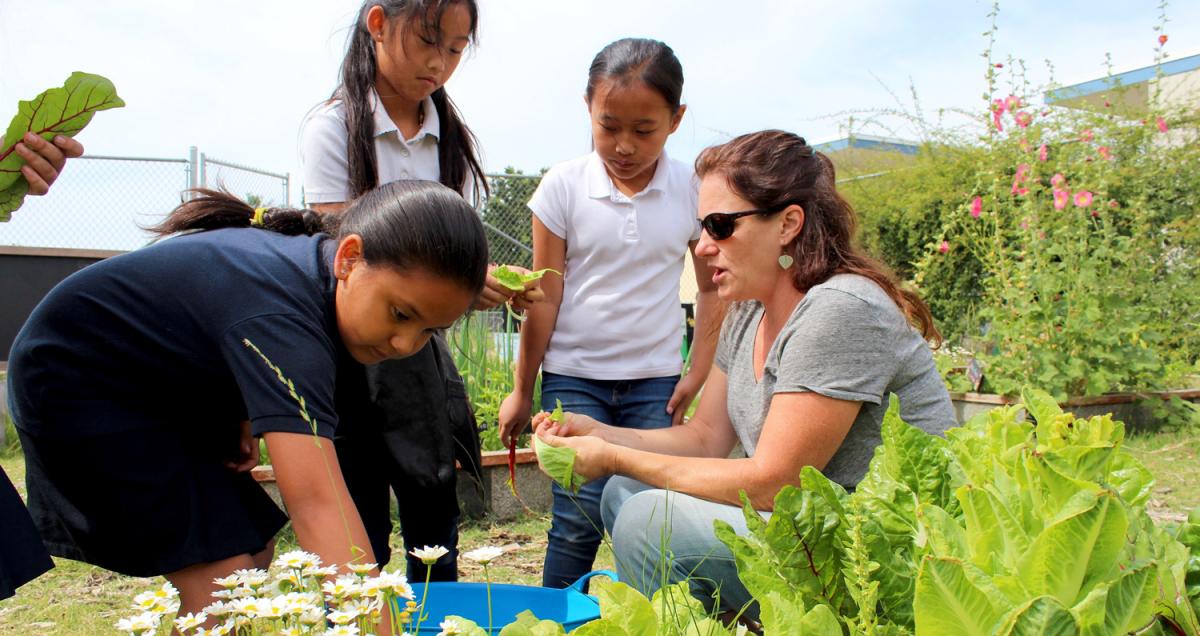
The small but mighty 2021 Food and Ag Cap-to-Cap Team is back prepping for the Metro Chamber’s annual regional advocacy program, which will be held virtually during the last week of October. As America’s Farm-to-Fork Capital, the Team strives to elevate the importance of the $12 billion+ food and agriculture economic cluster, highlighting innovations and initiatives across our food system, and leveraging federal policies, programs and investments.
After the Spring 2020 Cap-to-Cap visit was postponed last year due to the COVID-19 pandemic, the team continued to work with regional, state and federal partners on issues that have even more urgency than before – strengthening the resiliency of the regional food system, and ensuring a strong workforce. Our third big issue – broadband connectivity, access and adoption, which focused on supporting our rural economies and driving adoption of agri-food technologies – has broadened to a high overall regional priority, given all the impacts from the pandemic. We’re grateful to the Cap-to-Cap Economic Development Team for taking on this issue, linking to it as one of the region’s key infrastructure strategies.
To strengthen the region’s resilience, one Cap-to-Cap priority is to target institutional procurement policy changes that will expand local purchasing and supply chains and support local growers, food processors, distributors, and more. We are seeking increased flexibility in the USDA National School Lunch Program’s procurement regulations so local school districts can receive Cash in Lieu of Commodities – meaning school districts can use funds to purchase local goods instead of having to obtain food products from outside the state. This is a true Farm-to-School approach. As we have for many years, we continue to support the development of food system infrastructure such as food hubs, central kitchens at schools, and other facilities and equipment to increase opportunities for farm-to-institution procurement, including for hospitals. We have excellent examples of local procurement initiatives such as with Sacramento City Unified School District’s Nutrition Services and UC Davis Health system that have greatly expanded local purchasing, supporting the local economy and also delivering more than 65,000 fresh and healthy meals daily prepared by our local chefs. We also have a goal to address SNAP eligibility requirements for food insecure college students across the region.
Our other Cap-to-Cap priority is supporting the food and ag cluster’s workforce. Pre-COVID, there was already a skills gap and a pipeline gap across the economic cluster. With the average farmer being 57.5 years of years of age and the average skilled manufacturing (food processing) worker being 55 years of age, we now face a new challenge of worker retention, along with increased demand for digital and agri-tech skills across the entire industry. And of course, we want to ensure that our farmworkers and other front-line workers who kept the regional food system and supply chain going – through health crises and climate challenges, to ensure safe and healthy food for all of us – have safe working conditions and opportunities for income mobility. The Team supports increased federal investments in the Workforce Innovation and Opportunity Act, including for training, industry partnerships, and apprenticeships among others, to reskill, upskill, retain, recruit and grow the next generation of farmers, food entrepreneurs and food system workers. We also support legislation to provides certified agricultural workers with a path to help achieve earned legal status.
The Cap to Cap team is led by Honey Agency, Sacramento City Unified School District Nutrition Services, Valley Vision and Wilson Vineyards. Valley Vision is excited that this year’s program also will benefit from the update of the Food System Action Plan from 2015, prepared in partnership with the Sacramento Region Community Foundation, and the new Food System Resilience Poll, conducted in partnership with Sacramento State Institute for Social Research. These linked reports will be released in early October, giving us new insights for our food system. It will help drive the success of our Greater Sacramento Region Prosperity Strategy, in which food and agriculture is one of our three competitive advantage clusters. We’re also excited that Cap-to-Cap will provide the opportunity to work with our supportive Congressional delegation and new leaders at USDA and other agencies who hail from the region. Please join us to lend your voice and expertise to our food and ag mission!
To continue staying up to date with efforts to strengthen our regional food system, subscribe to Valley Vision’s Food for Thought email newsletter!
Trish Kelly is Valley Vision’s Managing Director, leading its food, agriculture, workforce, and broadband initiatives.
Recap: Challenges and Opportunities in Our Region’s Food System
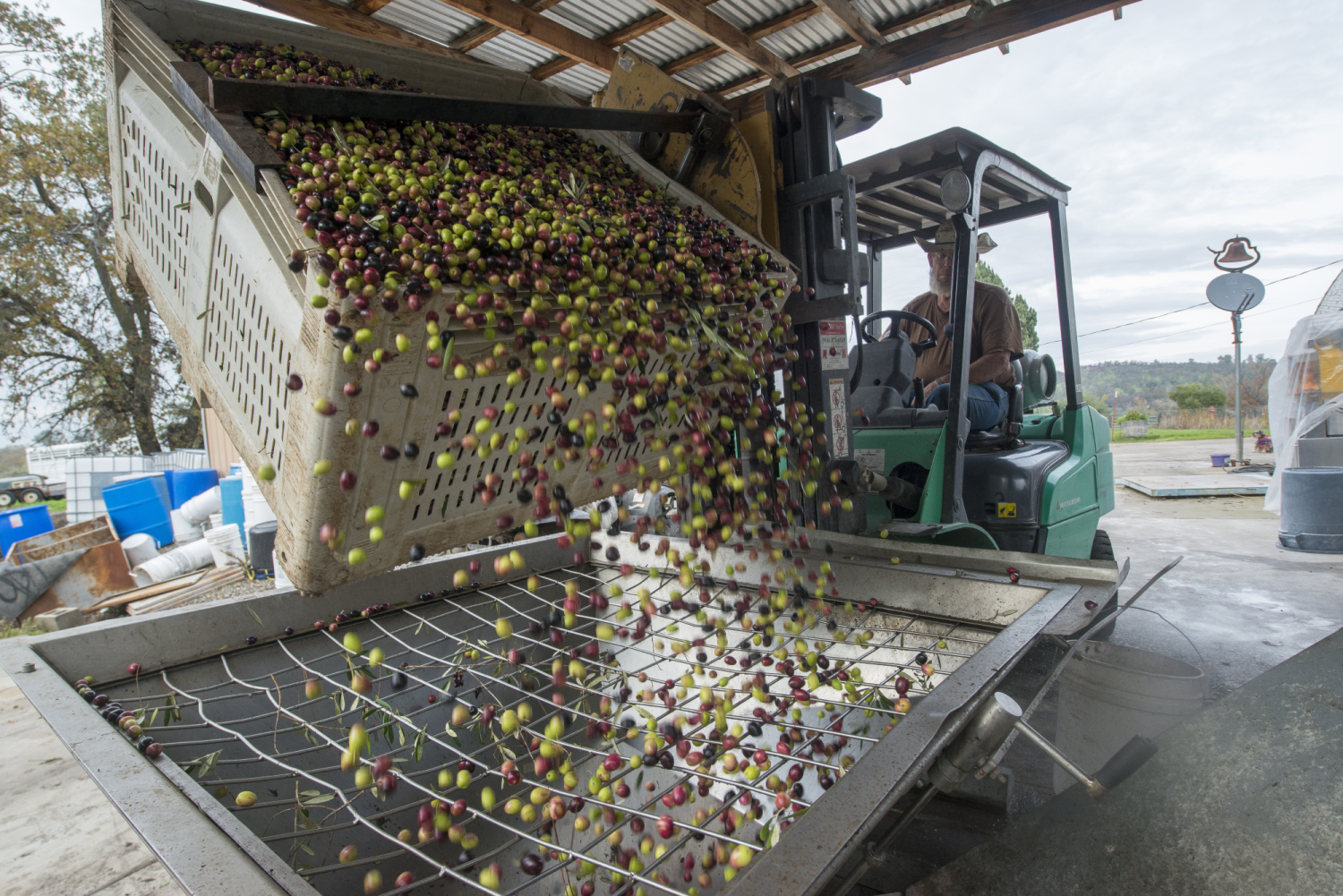
Valley Vision is proud to be researching and working alongside partners to support investment in the region’s food system.
Last month, as part of the 2021 Food System Action Plan update, Valley Vision hosted a series of Listening Sessions in topical areas as an opportunity to identify funding, capacity, and resource needs in the region’s Food System. We were joined by almost 200 participants who shared their expertise in workforce development and career pathways; viability of agriculture and land preservation; environmental sustainability and climate change; health and nutrition education; healthy food access and food security; and food economy and local market development.
Supported by the Sacramento Region Community Foundation, the 2021 Food System Action Plan (FSAP) is a regional food system investment strategy that will identify best practices, priorities, prevailing challenges, opportunities, and funding recommendations related to the region’s food system for the communities of El Dorado, Placer, Sacramento, and Yolo Counties. The goal is to increase the vitality of the region’s food system and to identify financing strategies and mechanisms to support a more equitable, health-promoting and accessible food system for all residents of the Greater Sacramento Region. The report will be released this Fall, and excitingly, for the first time, the report will be paired with a Food System Resilience Poll, in partnership with the Sacramento State Institute for Social Research (ISR) and Capital Public Radio. The poll covers similar topics related to the food system and will inform the Food System Action Plan. Both of these reports are slated to be released in Fall 2021.
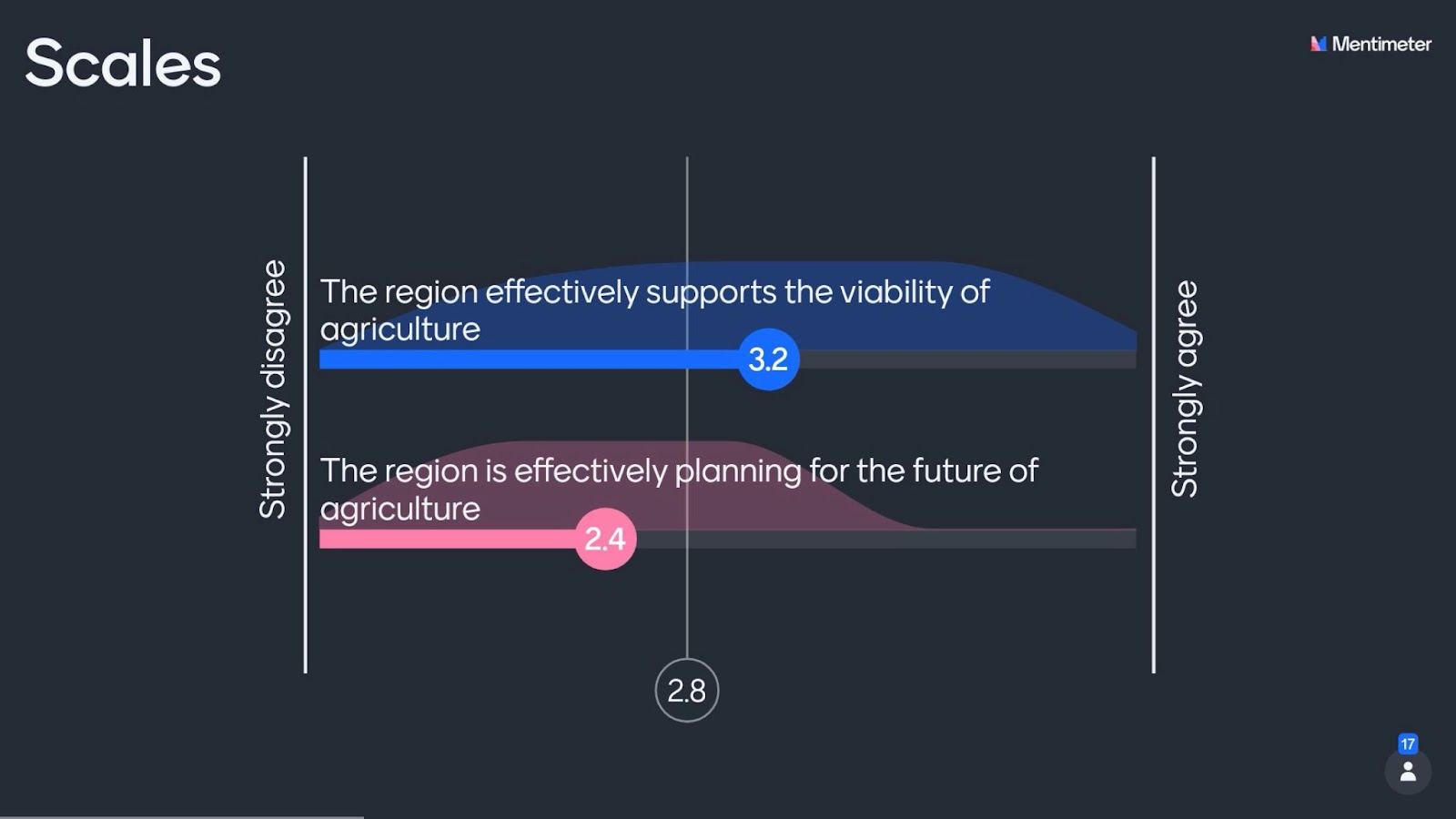
If you weren’t able to attend the listening sessions, below is a brief summary of each session:
- Session #1: The participants in the Careers in Food and Agriculture session discussed the manufacturing, processing, and distribution networks of the food system, illustrating the diversity of farm operations in the region. Although the session reminded us that the region has many successful Career Technical Education (CTE) programs in food and agriculture-which prepare high school students for college – challenges remain in sustaining, building, and retaining a local workforce, including the next generation of farmers and food producers. Lack of awareness of workforce opportunities and less than positive image were also challenges.
- Session #2: Land, capital and broadband access, agriculture technology, local markets, and land preservation were constant themes in the Viability of Agriculture session. Despite land conversion being a threat to agriculture’s viability, our region is doing better than others in the state; however, access to land to start a farm or a community garden remains a challenge. Workforce is another challenge.
- Session #3: During the Environmental Sustainability session, participants discussed local food production, food waste, edible food recovery, and the impacts climate change has had (and will have) on the food system, as is manifesting now. Although food hubs were discussed in some fashion in every session, in this session they were discussed extensively as a mechanism to reduce greenhouse gas emissions associated with transportation of produce and international trade and to provide additional capacity for packaging, processing and distribution of local produce for local consumption.
- Session #4: The Healthy Food Access and Food Security session showcased the strong network of nonprofits in the region, especially those in the emergency food system, who work to provide access to fresh, local, and nutritious food to under-resourced communities. In spite of the increased impact on this sector due to the pandemic, participants shared that consistent and expanded funding for infrastructure, organizational capacity and growth to manage the increased levels of clients and food remains a challenge.
- Session #5: In the Health and Nutrition session, the importance of family-based nutrition education and supply chain awareness was emphasized. A number of participants mentioned that most people are not aware of the correlation between food, health, and eating habits, and that robust educational support is needed to help promote healthy eating and nutrition literacy.
- Session #6: The Food Economy session focused on institutional purchases, entrepreneurship support, and local procurement partnerships. There are a significant number of small farmers in the region, but corporate producers can produce food for a lower price, making local food procurement and local economic development challenging. There are innovative efforts through schools and hospitals that can be models for increased local procurement and purchasing partnerships, support local producers and keep more dollars local.
The listening sessions revealed what most of us already know: As America’s Farm-to-Fork Capital, we have a lot of work to do but we have the infrastructure and the strong networks to do it. If we are organized as a region, we can better promote, support, and partner with one another to bring additional funding to the region. We look forward to sharing additional challenges, opportunities, and funding recommendations in the Fall when we release the 2021 Food System Action Plan.
The full recordings and presentation slides are available on Valley Vision’s website. If you weren’t able to attend the sessions and would like to provide comments for the FSAP, we have created a survey to gather additional input. Please reach out to Grace Kaufman (Grace.Kaufman@valleyvision.org) should you have any questions.
To keep up with Valley Vision’s work to advance livability in the Sacramento region, subscribe to our monthly Food and Ag newsletter!
Grace Kaufman is a Valley Vision Project Manager working in the Food and Ag and Clean Economy impact areas